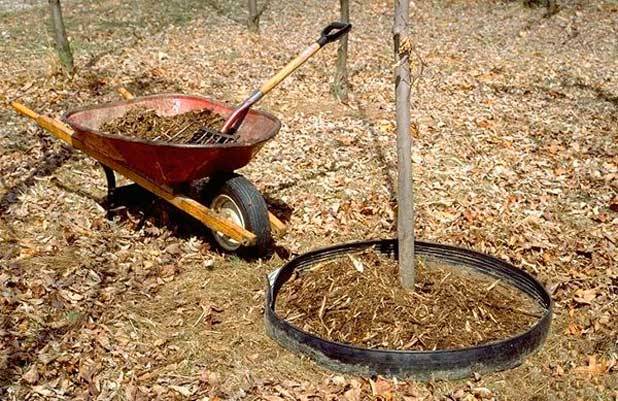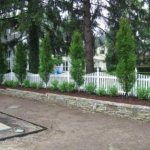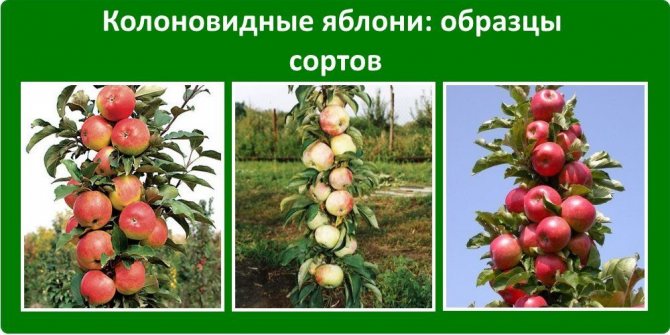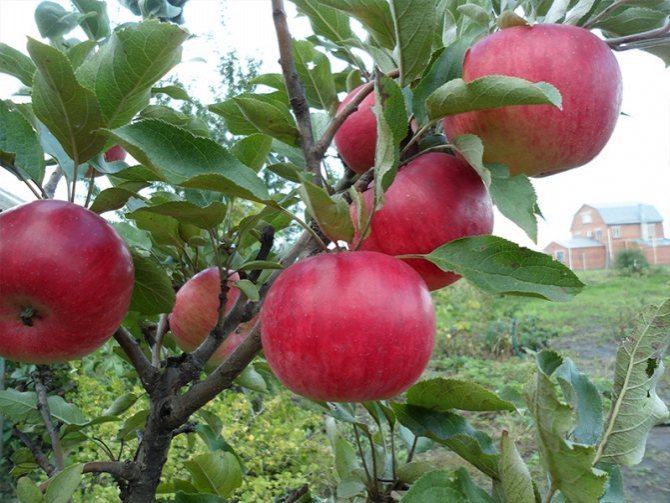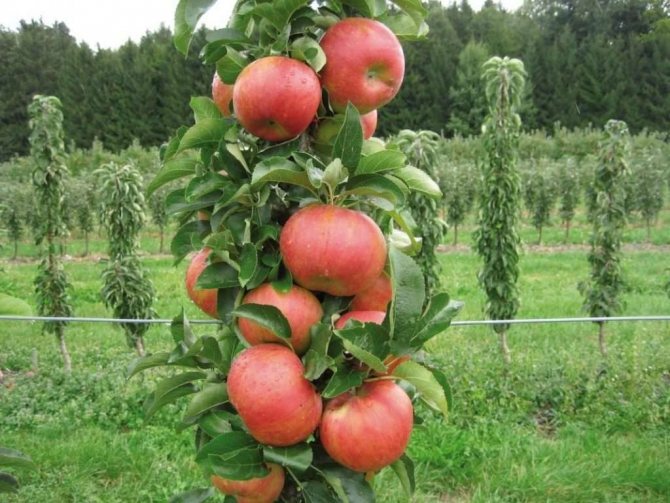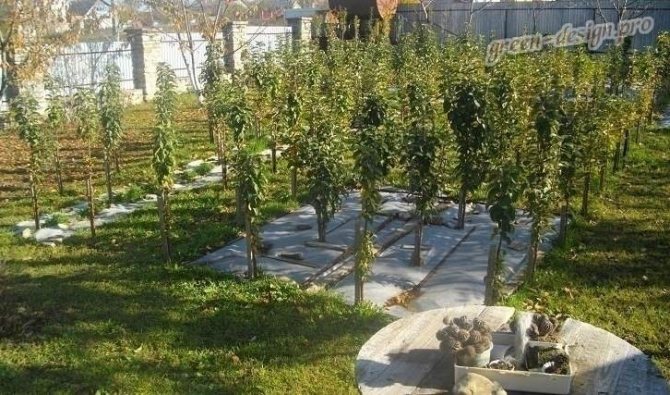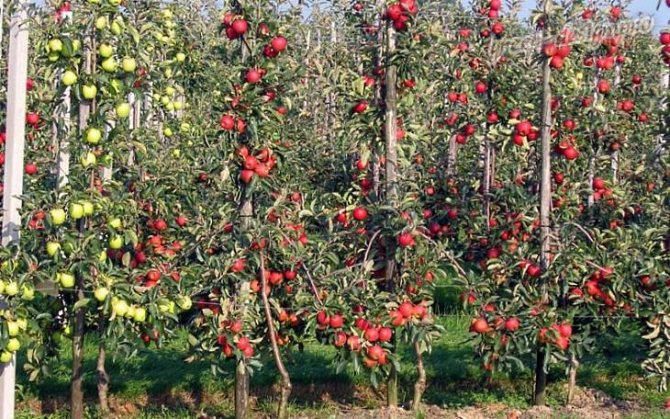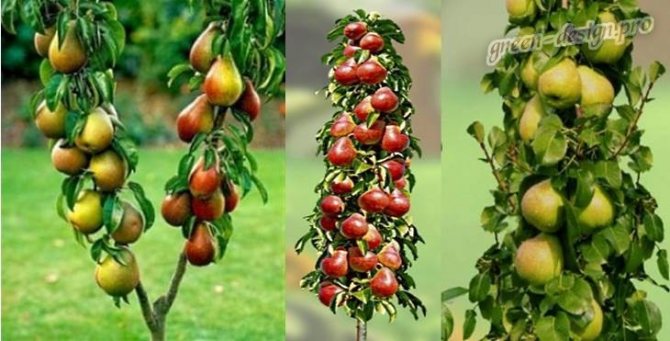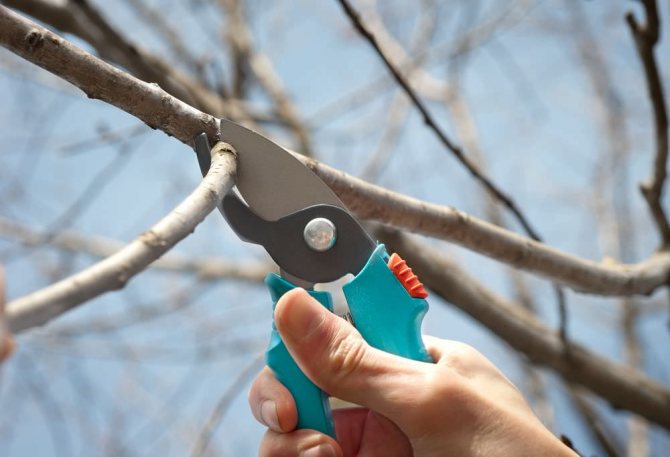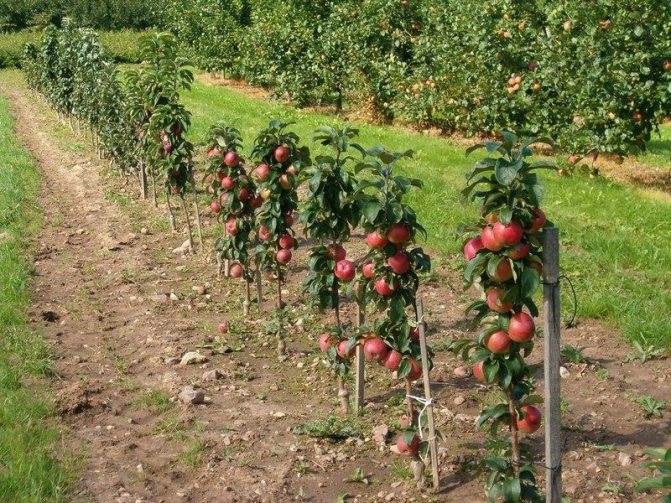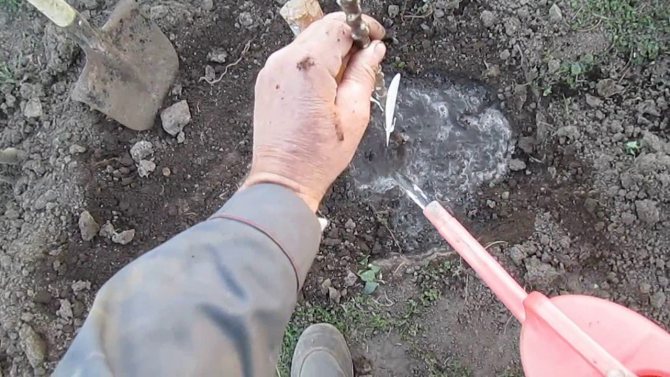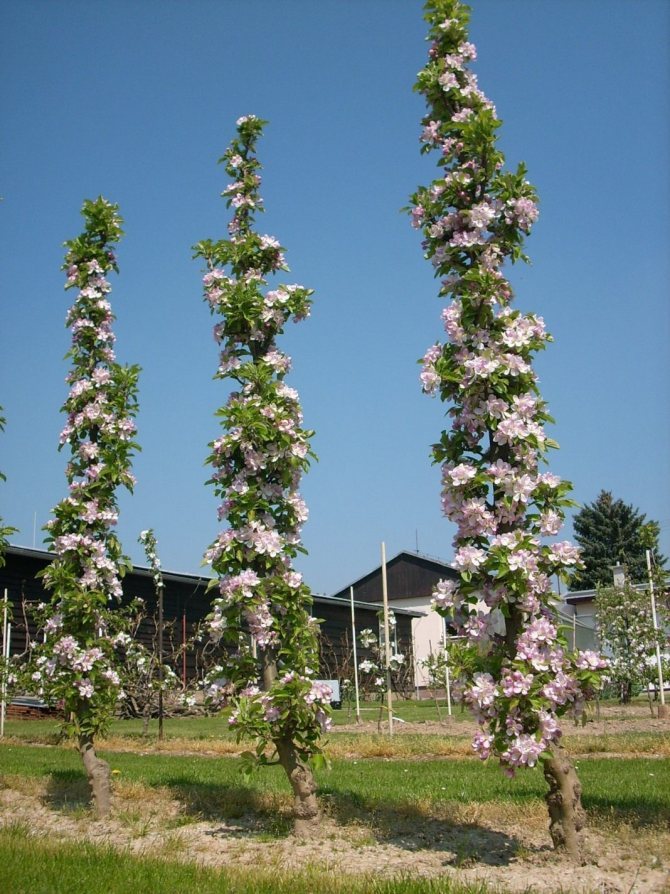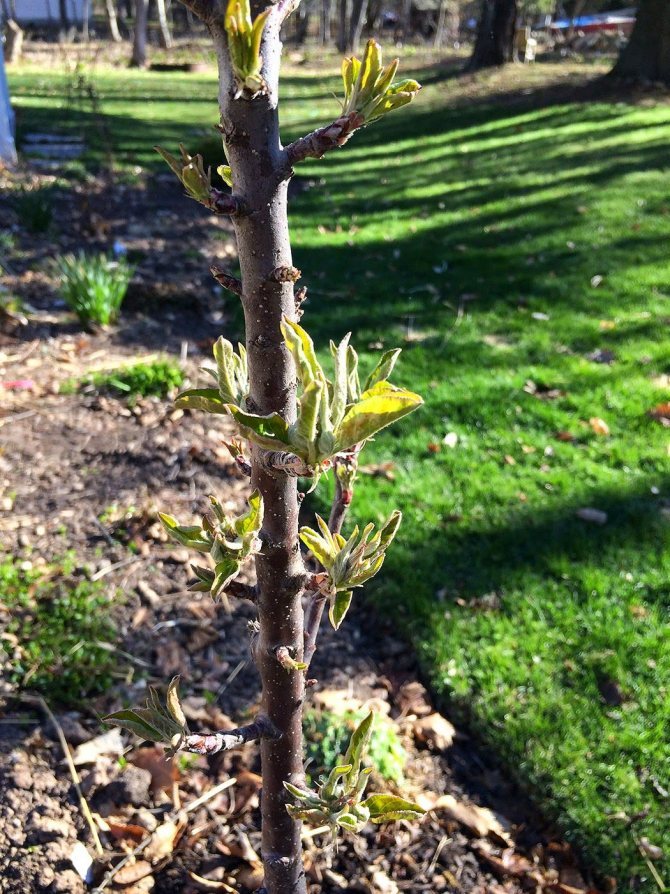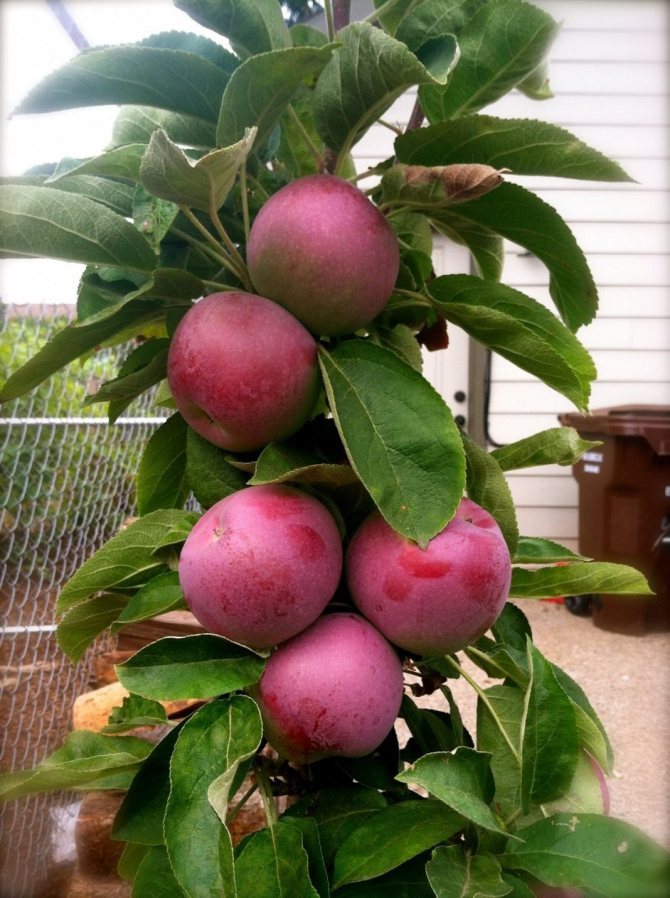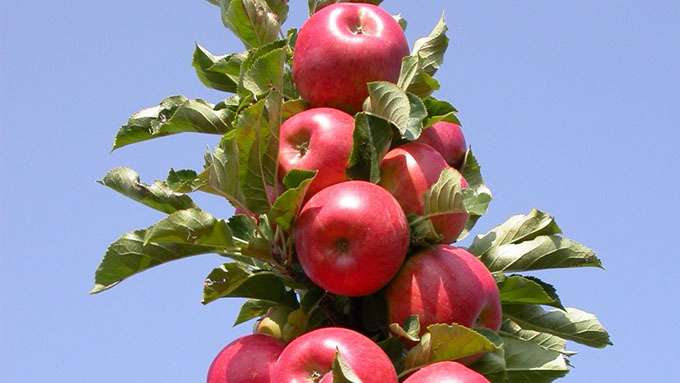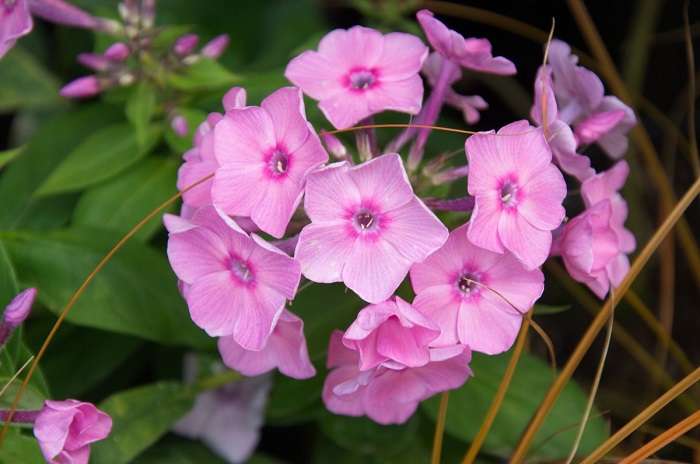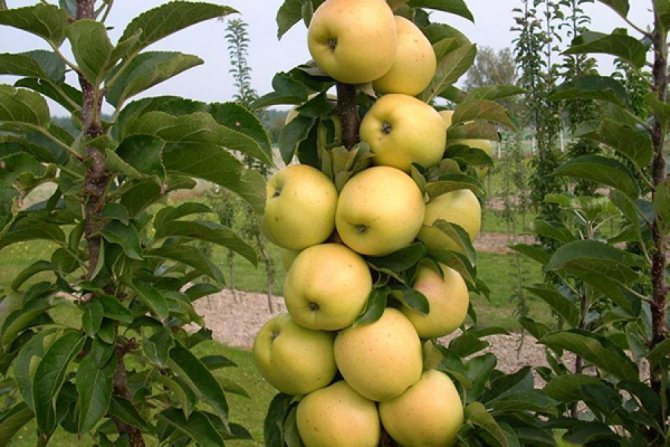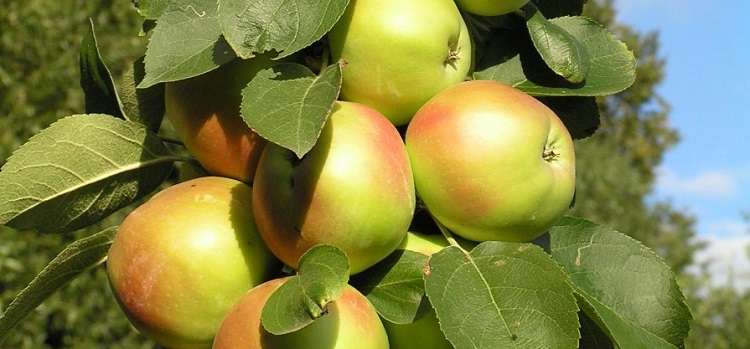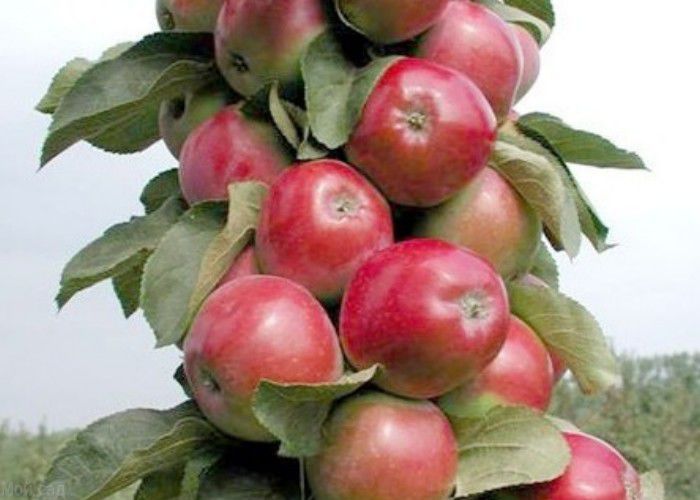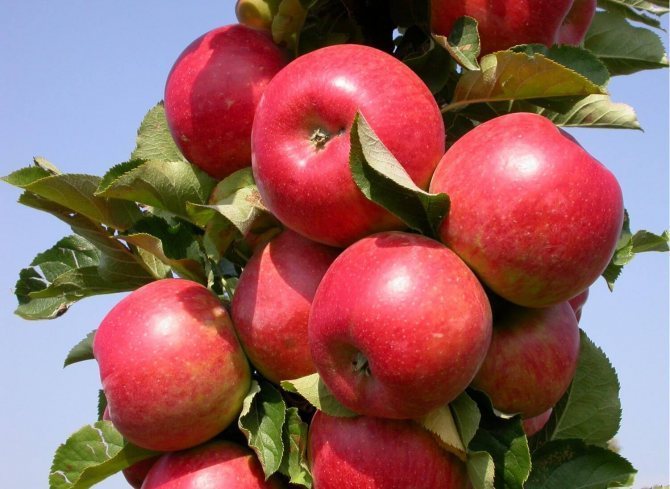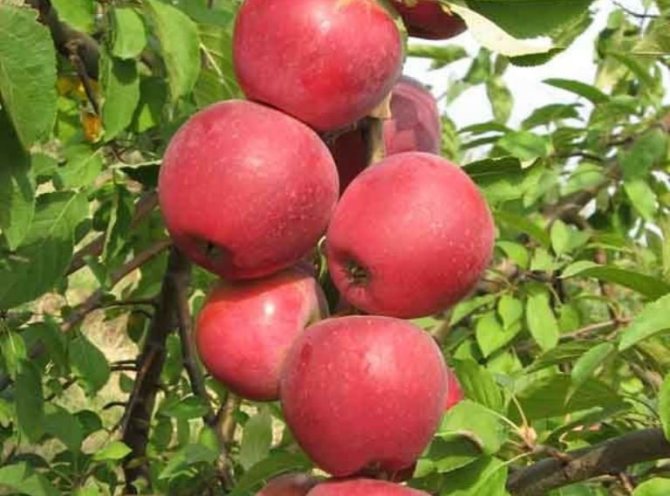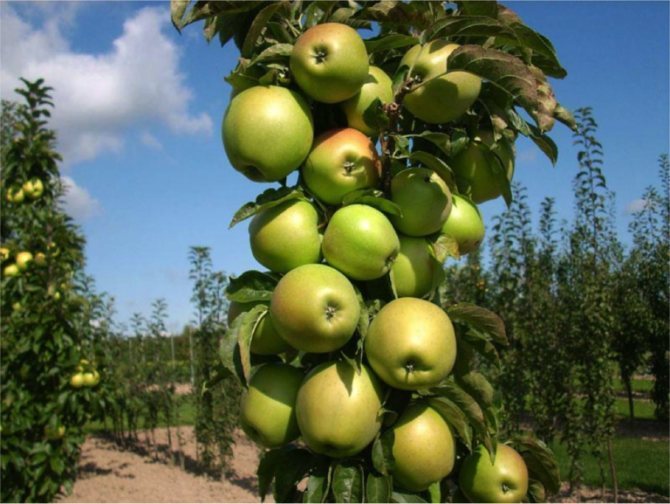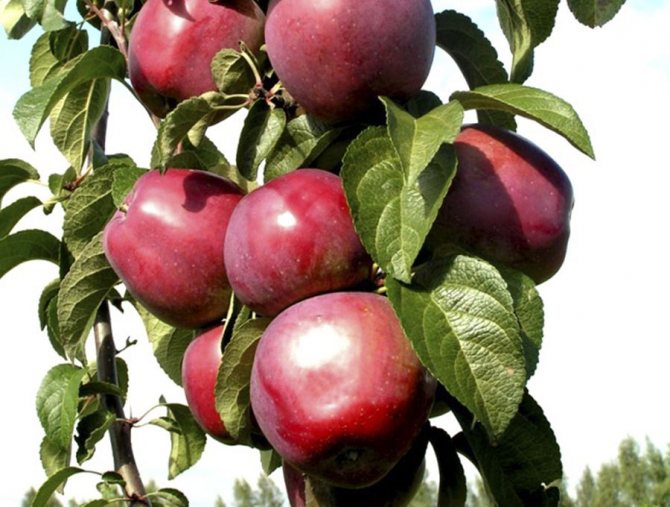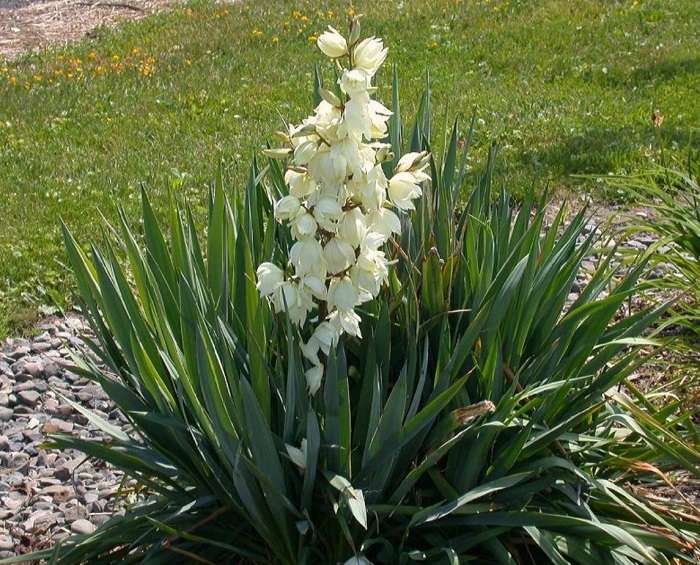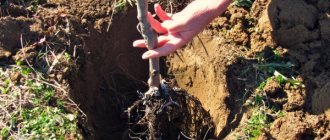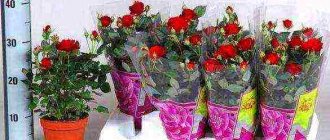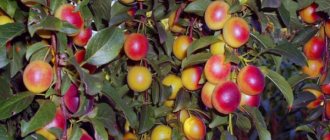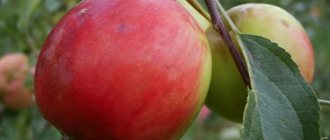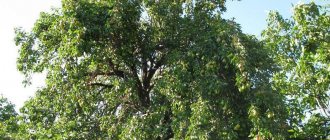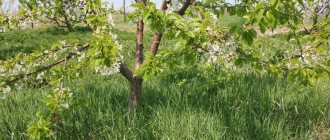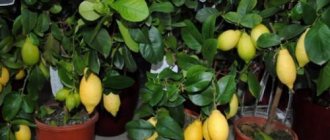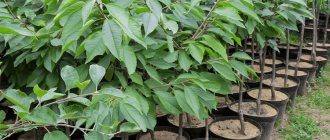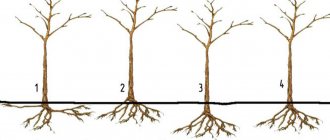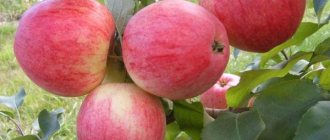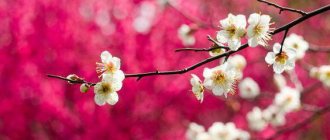Contemporary plot landscape decoration
Often, design solutions are truly surprising with their uniqueness and extravagance. Do you want to amaze others with new forms, reliefs and at the same time a harmonious combination of both? Then it is worth paying attention not only to the use of artificial structures in landscape design (reservoirs, flower beds, paths, hedges, light elements, etc.). It's much easier to try natural solutions. One of these modern options is live plantings. And in the event that you use columnar fruit trees to decorate the site, you can achieve several goals at the same time:
- make a more modern design;
- significantly save space for planting plants;
- get a harvest of natural fruits;
- grow trees that are unpretentious in care.
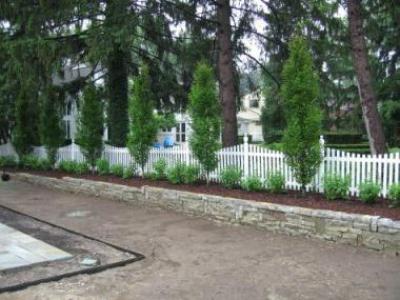
Features of the appearance of plants
What are the main distinguishing features of columnar trees? Firstly, their crown is similar in shape to a cylinder, which adjoins the trunk at about the same distance from it along its entire length. Secondly, fruit shoots grow directly from the main stem in the form of short branches without additional branches. It is thanks to these special external characteristics that trees with columnar crowns are often used to decorate the landscape of the site. Of course, in order to obtain ideal strict forms, it will be necessary to carry out a small adjustment (in the first years of cultivation - without fail). But, despite this, the main outlines of the tree crowns are natural and created by nature itself through selective breeding of new varieties.
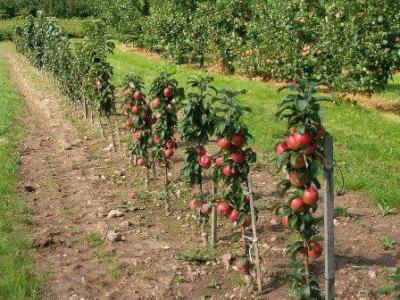

Subtleties of trimming
The biggest problem in growing this tree is the dying off of the upper bud. It is she who is the point of growth, because there are no other branches on the trunk. Often this bud simply freezes, and then the apple tree begins to grow in several shoots. You can leave it like that, but if this is not desirable, then you should choose the strongest of the shoots, and cut off the rest.
In addition, despite the fact that the tree does not have a crown, it still gives side branches. They need to be trimmed. There are several subtleties in this matter: for example, the stronger the shoot is shortened, the more actively it will begin to grow. If you cut off more than half of the trunk, then several more strong shoots will appear. If less, then there will be many weak ones that are easy to remove.
Pruning is done in spring, early summer, or fall. Detailed description:
- In the first year, you need to shorten the trunk and remove the side shoots.
- In the second, pinch the shoots that have reached 30 cm. You do not need to touch the main trunk.
- On the third, cut off the upper shoot up to 25 cm from the trunk, side ones up to 45 cm.
- On the fourth, thin out the branches.
- Shorten the apple tree by the fifth. A height of 3 meters is recommended.
- In subsequent years, remove dried and weak branches.
Pruning is important because it will yield higher yields. There are some rules to follow:
- To prevent the branch from drying out and bearing fruit, you need to leave 2 buds each.
- Use a sharp pruner, cut at a 45 degree angle, 1 cm from the rudiment.
- It is best not to remove branches older than a year.
- In the middle of summer, you can pinch the fast-growing shoots.
- Fix the apical shoot, make the rest fruitful.
History of appearance
Unusual in appearance, columnar trees have appeared relatively recently. To be more precise, in 1964, one of the Canadian farmers noticed a rather strange twig on one of the varietal apple trees in his garden. She, like the neighboring ones, grew from the main trunk, but had some distinctive features:
- there were no lateral shoots on the branch, but at the same time it was literally hung with fruit shoots with apples adorned on them;
- the wood covering was quite dense and resilient.
The surprised gardener showed the tree to a familiar breeder, who then began to experiment with the plant. This is how the first variety was bred under the name "Vazhel", which means a long stick for transporting hay. Later, columnar trees came from Canada to Europe, where breeders continued to work on them.
Trimming and shaping
Most often, you can see columns with one trunk, but some experts recommend forming a tree with two or even three trunks. This is necessary in regions with cold winters, in order to hedge against the freezing of the apical bud of one of the trunks.
To keep the tree from losing its shape, you need to regularly prune. This procedure begins when the seedling reaches the age of two. Since the tree grows from the apical bud of the trunk, and strong branching is not necessary, the formation of the crown is impractical. All pruning is to shorten the lateral shoots in the spring and then simply regulate their growth.
Tree varieties
Considering all the variety of unusual trees, three main groups can be distinguished. Below is an overview of each of them:
- Conifers. The most unpretentious and for the most part do not require special pruning to form the correct crown shape. Used to decorate areas with classical architectural landscapes (official buildings, parks, alleys, etc.). Look great when framing the entrance and for getting hedges. Combines with any plants and artificial compositions. The most popular are thuja and juniper.
- Deciduous. Used for the same purposes as conifers. The main difference from them is the need to control the preservation of the plant's shape.
- Fruit. They are used not only for decorating a summer cottage, but in order to solve the problem of limited space. Neat neat trees with an abundance of bright fruits in plain sight among the sparse foliage will surely become the main decoration of the site.
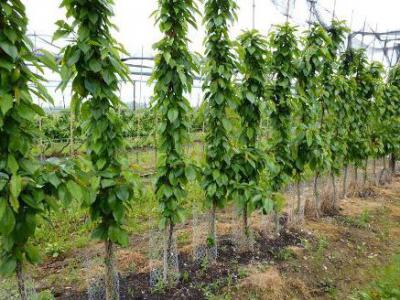

Popular varieties
The choice of varieties of columnar apple trees is quite diverse and each gardener can satisfy his preferences in the selection of trees with the right ripening times, color and fruit taste. Descriptions and pictures of the most popular varieties are presented below.
Early
- President is a fruitful and winter-hardy variety with whitish-yellow apples weighing up to 250 grams;
- Medoc is a variety of juicy, fragrant honey, sweet apples with a yellowish color of fruits weighing up to 250 grams;
- Ray - apples weighing up to 200 grams, light green with a reddish blush. flat shape and pleasant aroma;
- Iksha - greenish fruits with a reddish barrel of a flattened round shape have a sweet and sour pulp with a saffron aroma.
- Dialogue - yellow fruits weigh up to 100 grams, there is a slight sourness in the white juicy pulp.


The president.


Nectar.
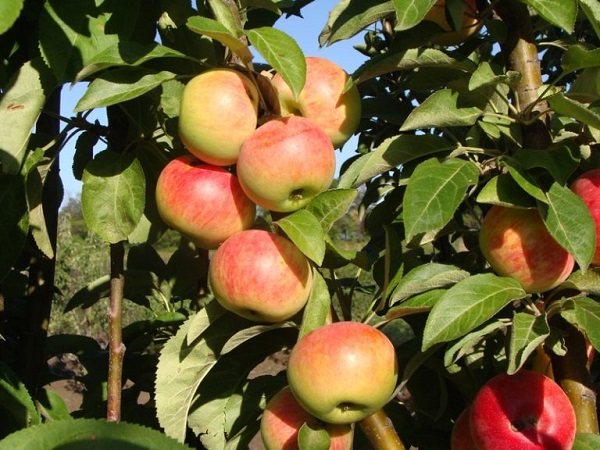

Ray.
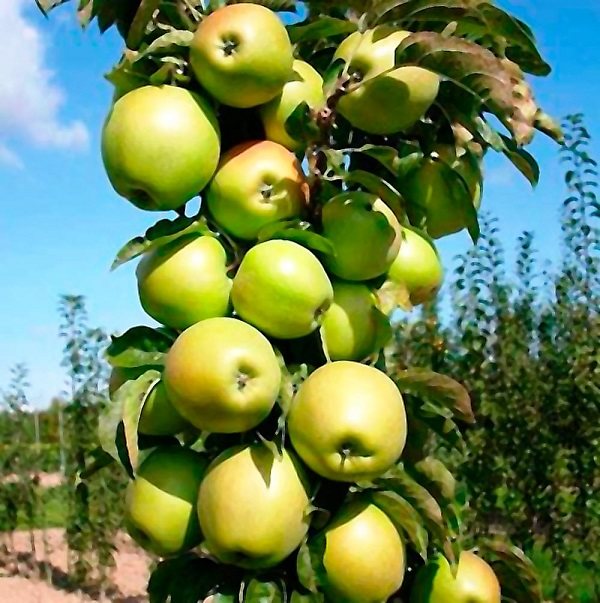

Iksha.


Dialogue.
Autumn
- Vasyugan - of a blurry red color, the fruits have a juicy greenish pulp and sweet-sour taste. Apples weight up to 200 gr.;
- Ostankino - apples weighing up to 220 grams. pale green color with a red wash over the entire surface of the fruit have a sweet and sour taste and a pronounced aroma of Macintosh apples;
- Amber necklace - golden-colored apples have a red blush and sweet-sour taste, weigh up to 170 grams, and are very fragrant;
- Chervonets - bright red fruits weighing up to 200 grams, with soft, but very juicy pulp.
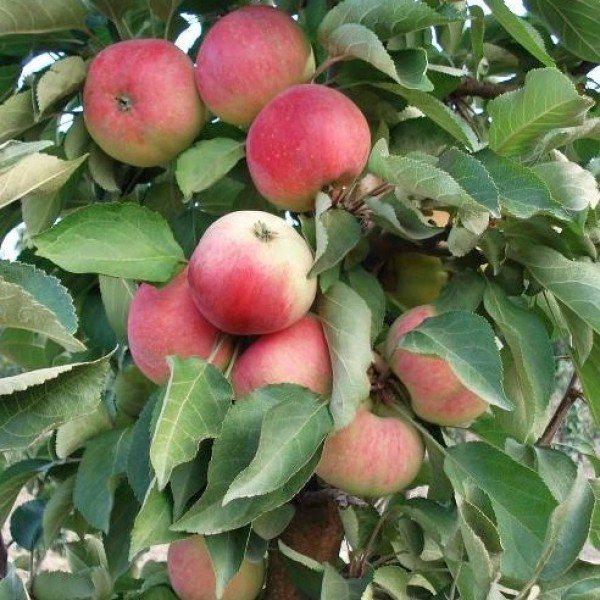

Vasyugan.
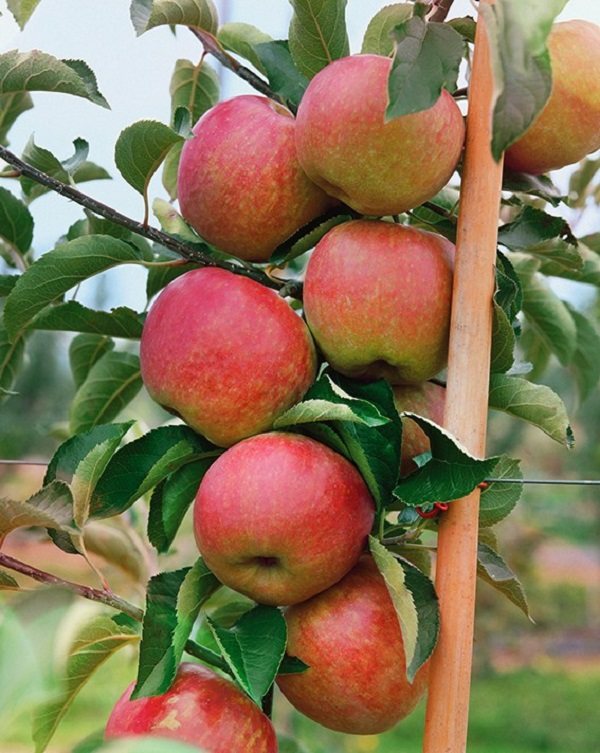

Ostankino.
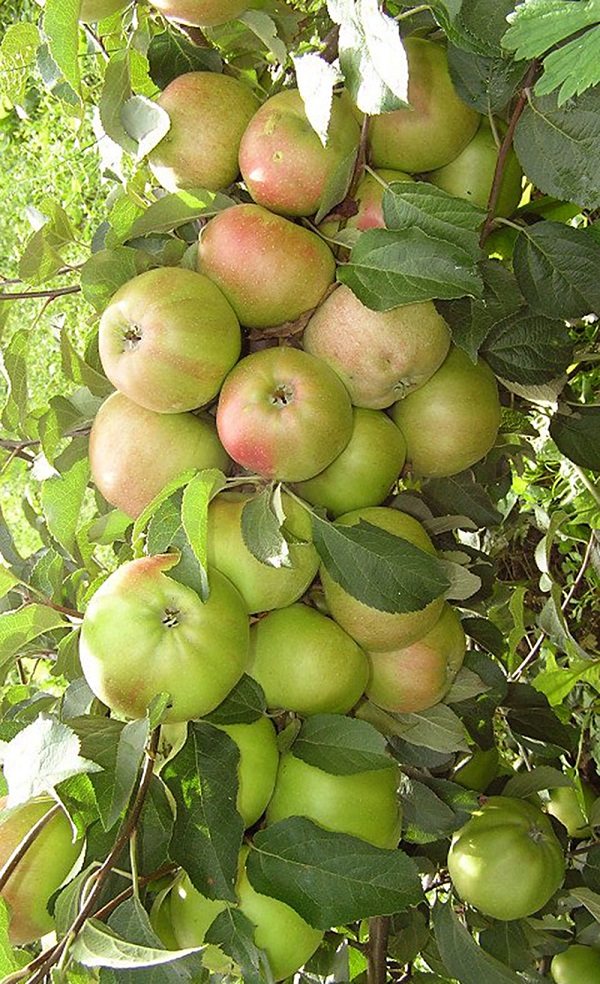

Amber necklace.
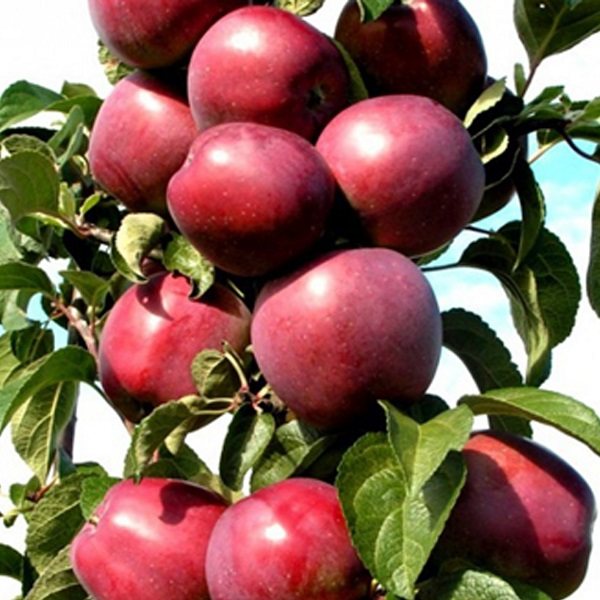

Chervonets.
Winter
- Moscow necklace - large burgundy-red fruits weighing up to 170 grams. have tasty, juicy pulp;
- Maluha - fruits of the shape of a truncated cone of yellow-green color with a thin shiny skin weigh up to 150 grams, apples of this variety are considered the most delicious among columnar;
- Currency - fruits weighing up to 140 grams. yellowish red with thin skin;
- Legend - red apples weigh 250 gr.
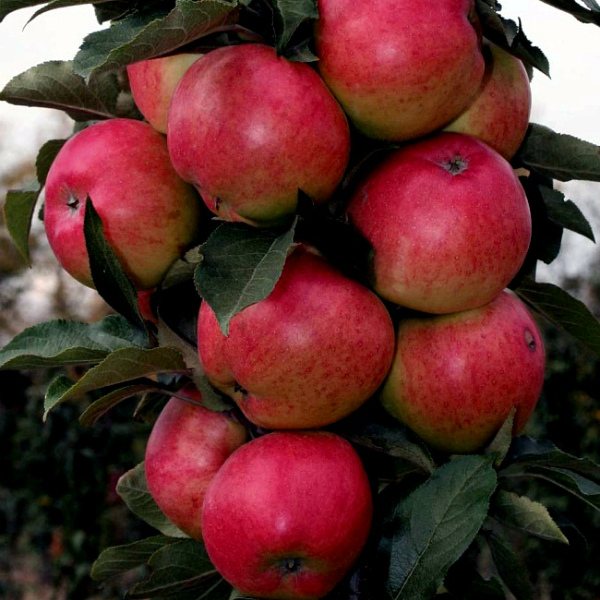

Moscow necklace.
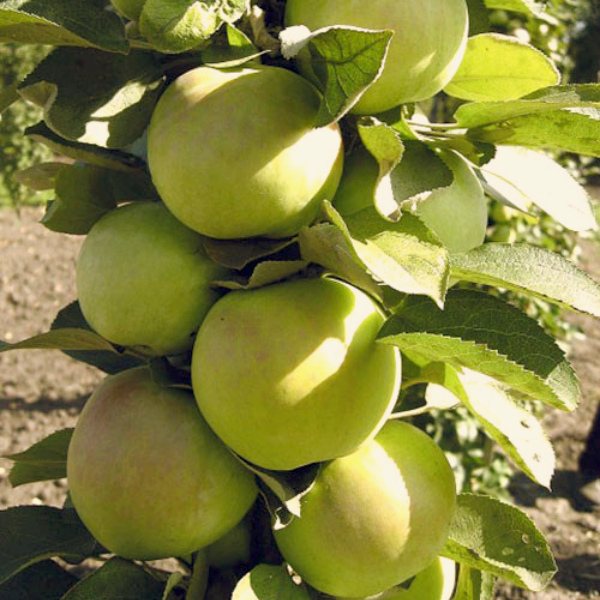

Baby.
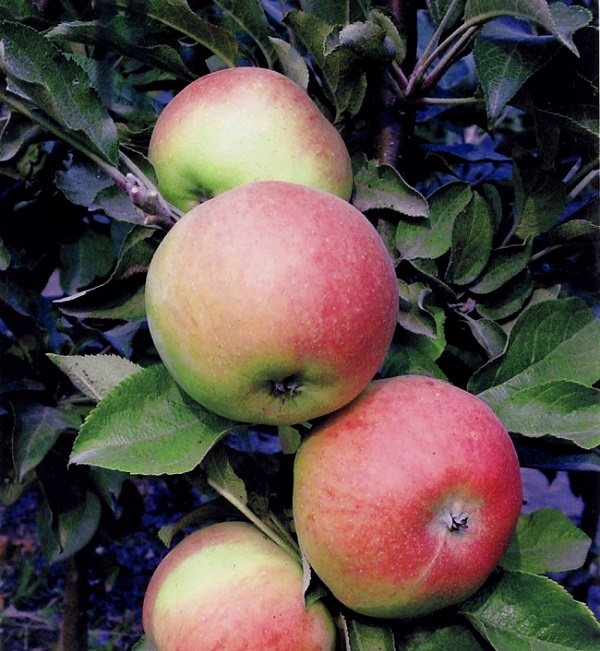

Currency.
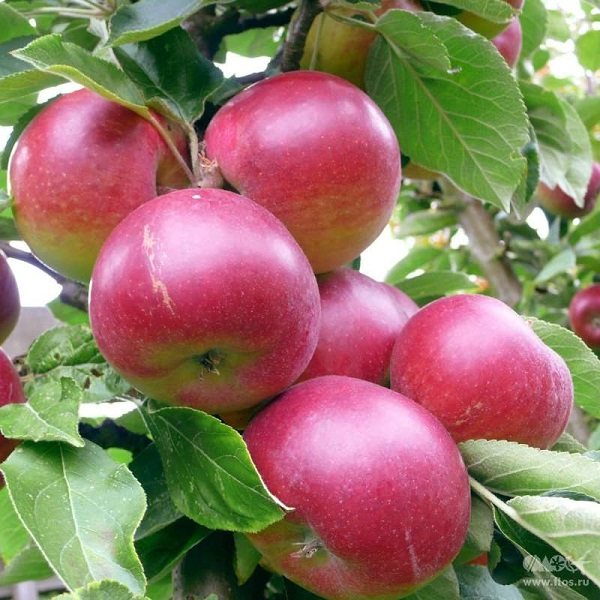

Legend.
You can read more about the varieties of columnar apple trees in this section.
Should you plant columnar fruit trees in your area?
This question is especially worrisome for those who have a rather limited suburban space, in which you can't really roam. After all, I want to reasonably distribute the land for all vegetable, berry and fruit crops. Perhaps you still doubt whether it is worth planting columnar trees on your site. The reviews of most gardeners will help you make the right choice. They will only once again confirm a number of advantages of using these particular plant varieties both for decoration and for obtaining a good harvest from small land areas. After all, an unusual shape and a small crown will shade the area minimally and at the same time bear fruit well.
The procedure for planting seedlings
Columnar fruit trees will bear fruit well only if the cultivation work is carried out correctly at all stages. The first and, perhaps, the most important is the organization of planting. It is best to place seedlings of columnar fruit trees in the ground in a permanent place in the fall. Then the root system will strengthen until spring, and the plants will give good new stem shoots. When marking, it is most practical to plant young trees in rows. Then, instead of separately located holes, you can dig shallow ditches. The distance from one row to another should not be less than 1 m, and between the seedlings - 40 cm.After planting, you need to compact the places near the root necks of plants to avoid the formation of air voids, and then water abundantly (at least 2 liters for each root).
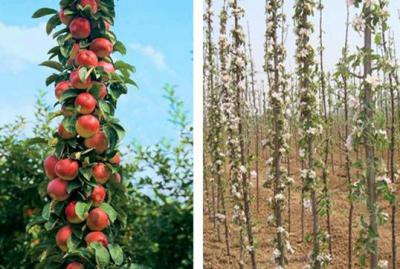

Gardeners reviews
The varieties "Severyanka" and "Svetlyachka", as well as "G-322", are no less popular in the Moscow region and the middle zone of our country. Basically, columnar pears receive positive reviews and high marks from amateur gardeners due to the fact that even an adult and productive fruit tree takes up a rather small space, which allows the entire planting area to be used as efficiently as possible.
The most popular columnar varieties are characterized by excellent taste and a fairly pronounced aroma. However, it is important to follow the forecast and, if necessary, use a shelter for the winter. Almost all experienced domestic gardeners recommend providing such fruit plantations with good insulation for the winter period, after removal of which, in early spring, correct pruning, feeding, as well as treatment of the plant from pests and pathogenic microflora is performed.
Columnar tree care: feeding, watering, weeding
Since the plants bear fruit abundantly, the soil on which they are located is often quickly depleted. Therefore, mini-trees need mandatory feeding. But too zealous with fertilizers is also not worth it. Use natural remedies such as manure and urea whenever possible. In addition to fertilizing the soil, organize regular watering, especially in the first two years after planting, until the plants gain strength.And in order for the root system to strengthen even better, you need to monitor the elimination of the fruit ovary in the first season. Although the plant can literally be littered with many flowers, they will need to be removed completely. Only in the second year can you leave them on the tree in a limited number. Watch for timely and regular watering, as well as weeding. After all, weeds absorb nutrients from the soil. Below is described the features of the cultivation of the near-stem land.
Read also: Mint - medicinal properties and contraindications, recipes for making infusions, decoctions and tea
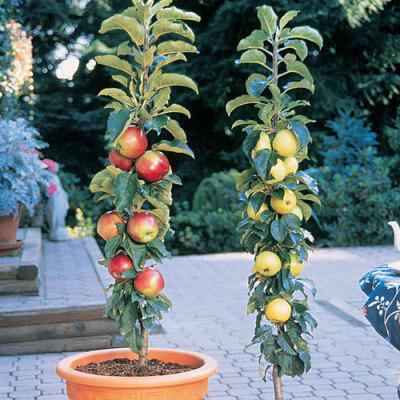

Care
As you have already noticed, such plants quite often, and most importantly, bear fruit abundantly, which as a result quickly depletes the soil, and if the soil is unsaturated with minerals, then the trees have nowhere to take all the necessary trace elements.
Therefore, caring for columnar trees begins with the ground. For feeding, it is advisable to use natural means, these are: compost and natural fertilizer.
Also, do not forget about constant watering, so that the soil and roots do not dry out, respectively.
It's important to know: but, do not overdo it in the care of the land. Then it is unnecessary to use a large amount of fertilizer and do not overfill it with water.
It's important to know: in addition to the tree itself, moisture and useful minerals can be taken by a weed, which must be regularly pulled out along with the root, otherwise it will not receive sufficient saturation.
As for caring for, everything is quite simple here: you need to regularly examine it for the presence of parasites and do not forget to spray it from them. You also need to cut off too large branches that interfere not only with the tree, but also with you during the long-awaited harvest.
Features of mechanical tillage
Due to the fact that columnar fruit trees have a root system close to the surface, weed very carefully. This is best done by hand, as machining with hoes and shovels can damage the roots. To reduce weeds, sprinkle the ground between the plants with sawdust or sow with cereals. The wells can be covered with straw on top to retain moisture.
Decorate your site with these unusual trees to the delight of your loved ones, as well as your neighbors!
Columnar fruit trees: features, planting and care rules
Gardeners from many countries with passion are exploring in practice a new, fashionable trend in gardening - the cultivation of columnar trees. Amazing, neat gardens with rows of graceful trees that look more like fruit-strewn tree posts. Columnar apple, pear and other fruit trees are not tall, the crown of the plants is extended upward, there are almost no side branches. An attentive observer, examining them closely, will see that despite their small growth and general miniature, these are the same traditional fruit trees familiar to everyone. Let's try to figure out how such unusual and such promising gardens appeared, what are columnar trees and what are their advantages over traditional plantings.
Columnar apple trees: pros and cons
Like any other fruit tree, columns have their own advantages and disadvantages. The pluses include the following characteristic features:
- small size. One tree takes up very little space, which significantly saves space on the personal plot. One apple tree accounts for about 50-100 sq. cm;
- very high early maturity - some varieties can please the owner with a small harvest in the first year;
- high yield for a very compact tree;
- decorativeness. The tree looks spectacular and unusual both during flowering and during fruiting;
- seedlings on a winter-hardy rootstock can be grown in regions with severe winters;
- high immunity to various diseases;
- small tree height, which makes harvesting much easier.
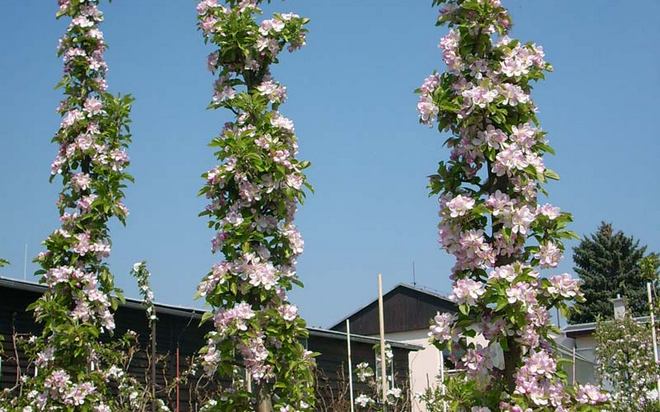

Blooming columnar apple trees.
Of the shortcomings, gardeners are most frightened off by the high cost of one seedling. In addition, there are other objective reasons that make you think about whether such an expensive purchase is needed:
- short tree life;
- to get large yields, you need to plant a lot of trees. These are very serious material costs;
- too labor-intensive maintenance, exacting care (frequent watering, top dressing, preparation for wintering);
- the need for proper crown formation.
Gardeners' reviews are very contradictory: there are many who are satisfied with their pets. But there are also those who were not enthusiastic about the cultivation process or the taste of the fruit.
History of appearance
Columnar fruit trees came to the rest of the horticultural world from Canada. The pioneer of the unusual tree form was a Canadian farmer in 1964. The farmer noticed that one of the young apple trees of the Macintosh variety has unusual branches extending from the main trunk at an acute angle. There were no horizontal branches on these branches, but they were literally strewn with apples.
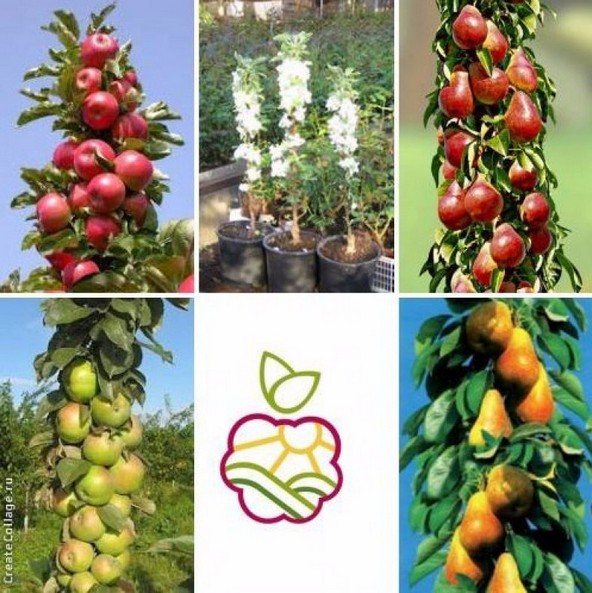

The surprised farmer invited a breeder and asked him to study an unusual apple tree. After some time, after the selection work, a successful result was obtained, it became the columnar apple variety "Vazhak". Gardeners liked it very much and became widespread in many countries. Gradually, new varieties of dwarf trees began to appear.
Features of apple trees
In height, the columnar apple tree reaches only 2.5 m, and the width of the plant is no more than 0.5 m. This is due to the fact that there are no long lateral branches on the central shoot of the tree. Due to the many short shoots extending from the trunk at an acute angle, columnar apple trees have excellent compactness.
A distinctive feature of trees is their early maturity. With sufficient fertilization, apple trees can bear fruit immediately in the first year of planting. It should be noted that obtaining a good harvest depends on providing ideal conditions for the growth of trees. The average yield per tree is 8-10 kg.
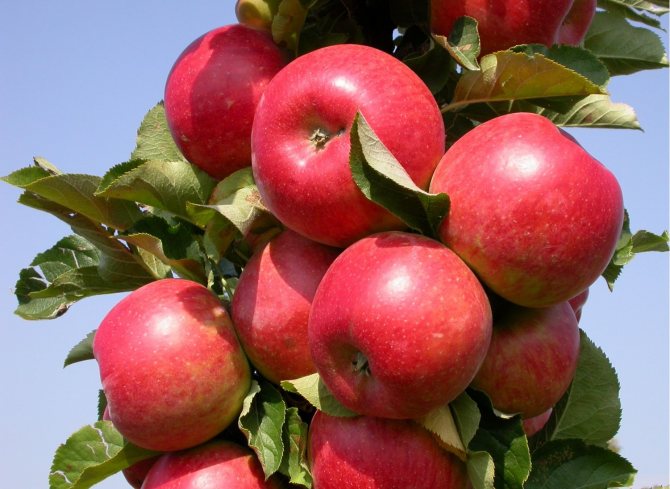

The benefits of planting columnar apple trees include:
- The presence of a sparsely branched root system. Thanks to this, you can engage in the creation of fairly dense plantings in a small area.
- Ease of harvesting and tree care, which is due to the low growth of plants.
- Compact crown and no excessive shading of the site. This property allows you to additionally grow other plants in the garden (currants, gooseberries, strawberries).
- They act not only as a source of tasty and healthy fruits, but are also an integral attribute of landscape design.
The disadvantages of columnar apple trees include a high price and a short fruiting period. The yield of trees decreases significantly after 5-7 years. For this reason, it is necessary to constantly renew the trees in the garden.
Main Benefits of Columnar Fruit Trees
A new variety of miniature fruit "dwarfs" has gained immense popularity due to the fact that when comparing the yield of the same orchards (traditional and columnar), the palm tree in terms of profitability and convenience is given to columnar orchards.
Since the plants are not tall, it is easier to treat them from pests, it is easier to prune branches annually, and it is convenient to pick ripe fruits. And the most important argument in favor of trees with a narrow and elongated crown is that their fruiting begins from the second or third year after planting, and ordinary fruit trees begin to bear fruit at 4-5 years.
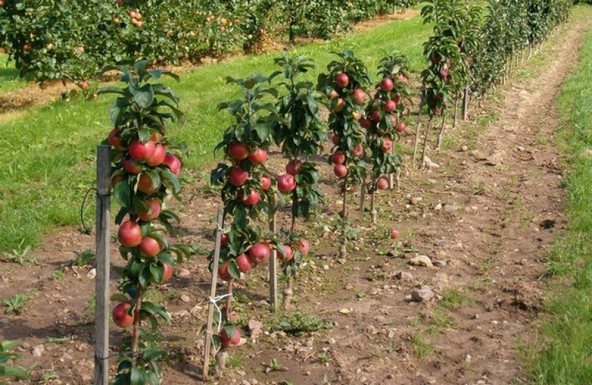

On an area of one hectare, you can place a garden of two thousand columnar plants, while ordinary fruit plants, with a wide crown, will fit no more than 400 trunks.
Consequently, more fruiting plants are placed on the same area, and the costs of maintaining and caring for them are much less.
Content
- Listen to the article
- Description
- Planting a columnar apple tree When to plant
- Planting in autumn
- How to plant in spring
- Columnar apple tree care Spring care
- Summer care
- Autumn care
- Treatment
- Watering
- Top dressing of a columnar apple tree
- Wintering
- Pruning a columnar apple tree When to prune
- How to propagate
Variety of varieties
Columnar fruit tree varieties are divided into two varieties:
- seed dwarfs, which are grown from seeds and have a natural gene for stunting (dwarf gene);
- grafted dwarfs, they are obtained by grafting twigs from parent columnar plants to the root system of a related common tree.
For example, varieties of apple trees "Currency" and "Arbat" are natural dwarfs, and apple trees "Brusnichnaya", "Dusen", "Paradizka", "Orlinka" have proven themselves well as varieties for rootstock. For columnar pears, young seedlings of quince and irgi with a well-developed root system are usually used as a rootstock. Columnar trees have a maximum height of 2.5 meters. If they are not cut and guided, the gardener will not achieve a column-shaped form, ordinary fruit trees will grow, only with a limited growth point. Almost half of the young dwarf trees bloom in the year they are planted. Experienced gardeners prefer to remove these flowers (pinch) so as not to weaken the flowering of the young seedling.
The apple tree "Arbat" is a dwarf variety, the fruits are small (100-120 grams), the skin and pulp of apples are dark cherry in color. The apples are tasty and juicy, but the variety is not intended for long-term storage; when set for the winter, it quickly deteriorates;
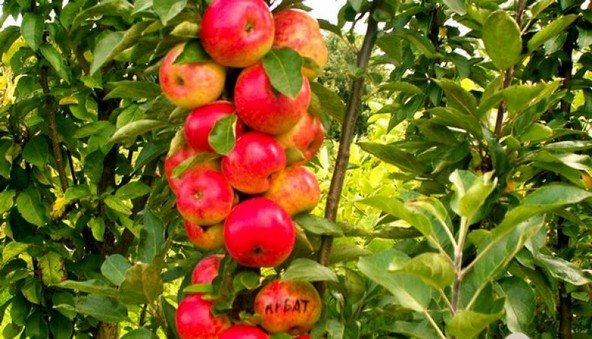

Apple-tree "President" - the variety has excellent winter hardiness, is not very susceptible to fungal diseases and insect pests. The fruits are small and medium in size, the weight of apples is 140-250 grams. The color of the peel ranges from white to pale yellow, like the "White filling", the pulp is juicy, the color of the pulp is light. Harvest time is mid-September.
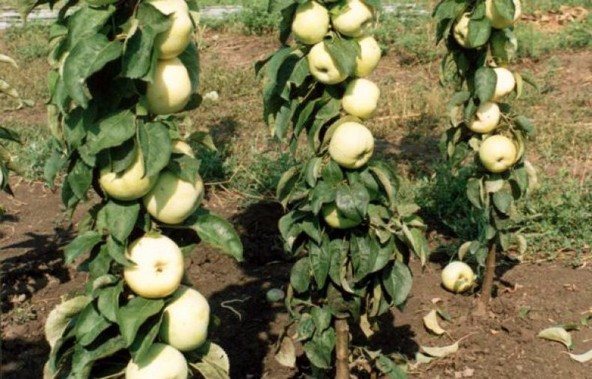

Popular varieties of columnar pears:
Pear "Decora" is a dwarf plant, does not exceed a height of 1.5-2 meters. Medium-sized pears (150-200 g), have a pronounced pear aroma and sweetly sour pulp. The fruits are very juicy, in full ripeness the peel is covered with a burgundy blush. Ripening time is the second half of August. This wonderful variety has a significant drawback - the fruits are stored for no more than 10-14 days.
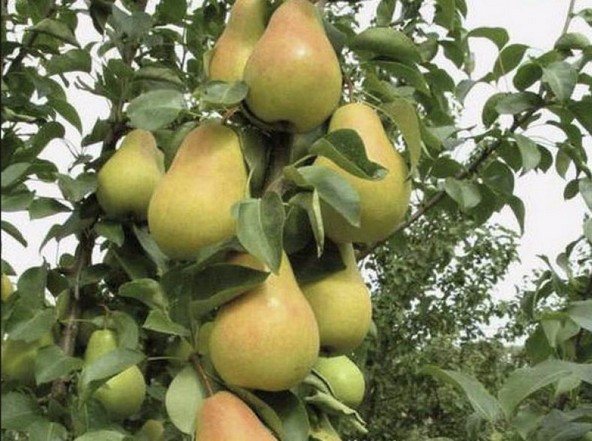

Saphira pear is a variety with good frost resistance (down to -20 ° C). Possesses good productivity, ripe pears are colored in three shades smoothly passing into each other (green, yellow, red). The harvest of this variety has a partial keeping quality, can be stored without loss until December.
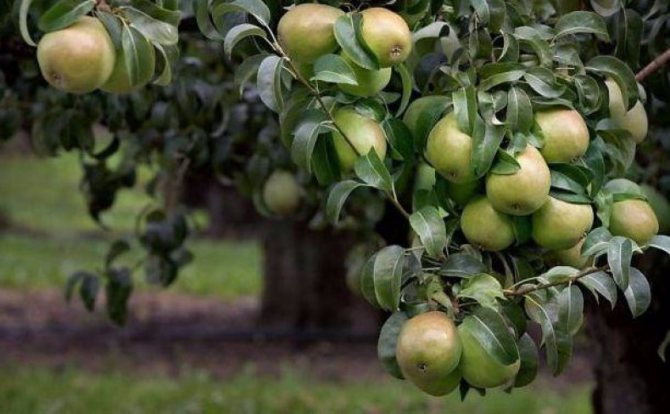

Growing columnar apple trees
The undoubted advantage of these apple trees is their high planting density. Therefore, in a very small area, you can grow trees of several varieties with different periods of fruit ripening.
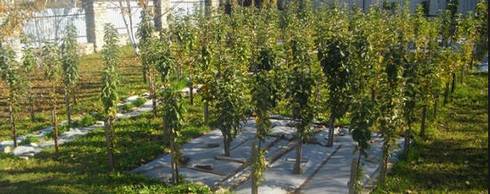

Cultivation of columnar apple trees.
Cultivation is complicated by the exactingness of the columnar to the soil. You will have to fertilize and feed the apple tree at least once every two weeks. It is advisable to combine the first spring and last autumn feeding with treatment for diseases and pests.
Also, it is necessary to provide the tree with regular watering, since the roots are located close to the surface. The plant especially needs watering during flowering and growth of the ovary.
In the first year of planting a seedling, it is advisable to pick off the flowers that have appeared, sacrificing a potential harvest.This will make it possible to direct the main forces of the tree for good rooting. But next year the apple tree will thank the owner with a bountiful harvest.
The trunk circle must be kept in perfect order: constant weeding is required, garbage collection.
Correct planting of columnar trees
Since columnar plants have practically no lateral branches, they can be planted much denser than ordinary tall spreading trees, but in order to choose a planting scheme for a dwarf garden, all the nuances should be taken into account:
- whether the crop will be harvested by hand or whether it is necessary to provide a distance sufficient for transport to travel;
- whether a garden planting is planned according to a single-row or two-row scheme with an interval of one alley.
The minimum distance between fruit "dwarfs" is 40 cm (between plants and between rows), and the maximum distance is 120 cm, and making it even larger is simply unprofitable.
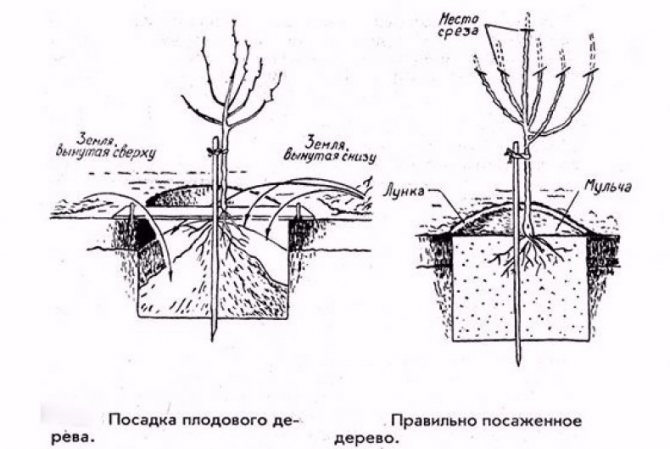

Miniature fruit plants are planted in spring and autumn. Spring planting is carried out in the first half of April, as soon as the snow completely melts from the ground and the soil warms up. But gardeners with experience say that the autumn planting of "dwarfs" is more preferable, since during the autumn and winter the tree manages to take root and adapt to new conditions. When planting in autumn, it is important to maintain an acceptable time frame and carry out the landing no later than September.
Read also: How to care for Azalea
Once the variety is selected and the desired seedling is purchased, you need to decide on the landing site. All fruit trees love unshaded, sunny places, reliably sheltered from the icy northern winds.
In advance, you need to prepare planting pits according to the number of purchased seedlings. Ideally, when planting in spring, it is advisable to dig holes in the fall, and when planting in autumn, in the spring. Planting holes are dug according to the planting scheme chosen by the gardener, taking into account the distance between neighboring plants and aisles.
The depth of the planting pit should be 40-50 cm, and the width of the recess is made taking into account that the roots of the tree that are planted should in no case be wrapped or bent. When the planting hole is dug, fertilizer is applied to the bottom. It can be rotted cattle manure, compost. Two shovels of such fertilizer are enough for one planting pit. The selected composition is thoroughly mixed with the soil, which is located at the bottom of the planting pit.
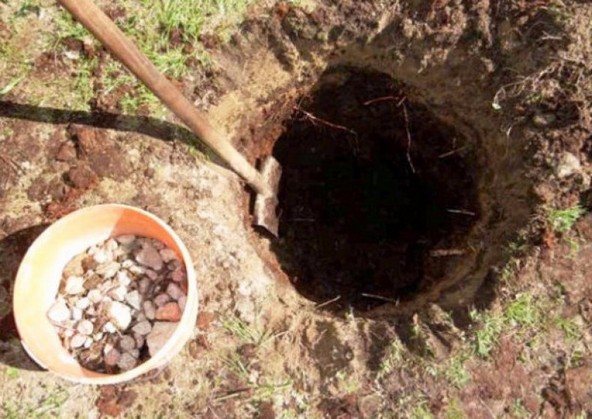

A bucket of water is poured into the finished hole, they wait for it to be absorbed into the ground and plant a tree. The planted plant is watered again at the root (about 5-7 liters).
General landing rules
Everything starts with site selection, places for planting columnar apple trees.
What does an apple tree need:
- Fertile soil... And these are light soils - sandy loam and loamy. She is made fertile. Even if she's not quite like that.
- Pick a spot accessible to the sun... You won't see a blush on apples without the sun.
- Select an area for columnar apple trees where less wind blowing... And less drafts.
- Moisture is needed... And you need enough moisture: But not high groundwater. They must be at least 2 m above ground level. Otherwise, you have to take care of the drainage.
- Highly resistant to disease(there are also those immune to scab). And to pests.
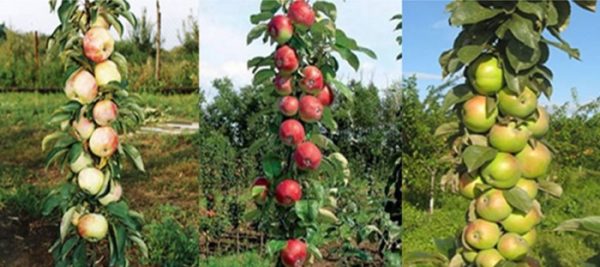

Columnar trees grow up to a maximum of 2.5 meters in height and 30 to 50 centimeters wide. Each tree represents one trunk.
- Pick up seedlings annual... They take root better than two-year-olds.
- Plant seedlings quickly... Do not expose the roots to air for too long. Especially in the sun.
Attention! Trample down gently so as not to damage the roots.
Care features
After planting columnar fruit and berry trees, the measures for protecting and caring for them are no different from caring for a regular garden. But, of course, there are some subtleties that not too experienced gardeners need to know:
In the first year
Sometimes planted "new settlers" can dissolve flowers in the year of planting. This threatens a general weakening of the seedling, its root system and, as a result, future crop shortfall. Such untimely blossoming flowers are recommended to be removed, avoiding fruit setting.
Harvest formation
In subsequent years, the young garden will bloom profusely. It's a wonderful sight, but it poses a serious threat to the viability of young seedlings. In the place of each flower, under favorable weather conditions, a fruit ovary is formed. If a lot of fruit embryos are set, they need to be removed using a garden pruner (manually). A young plant cannot always bear too much fruit load. Therefore, when forming a tree's congestion with fruits: from a bunch in which there are 5-7 small fruits, you need to leave only two.
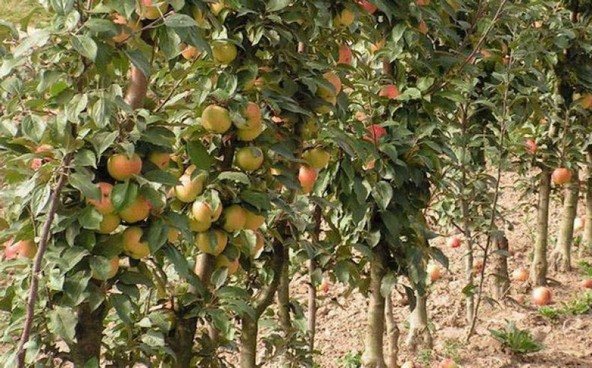

Columnar trees have a root system that runs parallel to the surface of the soil and lies shallow underground. During the summer season, the land near the trunk circle of young seedlings and in the aisles is cultivated from weeds (weeded). During such processing, mechanical damage to the shallow roots can occur. This threatens the death of the plant. To avoid damage to the roots and to save on the manual labor of the workers hired for weeding, all the soil in the garden must be tinned. You can also cover the trunk circles with mulching materials: sawdust, shavings, sunflower or peanut husks.
During the mass summer of insects, traps are hung on the branches of the garden - containers with sweet compotes, diluted in half with vegetable oil. Insects, attracted by the scent of the fruit, land in the trap, sticky oil envelops their wings and the pest can no longer fly.
Trapping belts are installed near the trunks of fruit trees. Such a belt is fixed on the trunk, its surface is smeared with a sticky and sticky substance that does not allow ants to bring aphids onto the leaves of the tree.
Watering Young seedlings need regular watering, but the gardener does not need to spend the day and sleep with a hose in his hands in the garden. If the garden is laid out in an arid area, where it rarely rains, it is possible to arrange drip irrigation for plants. If the garden is small, it can also be watered at the root, in a basal depression that will not allow the water to spread. Usually, young seedlings have enough watering when planting and two or three waterings at the root during the first two months of life.
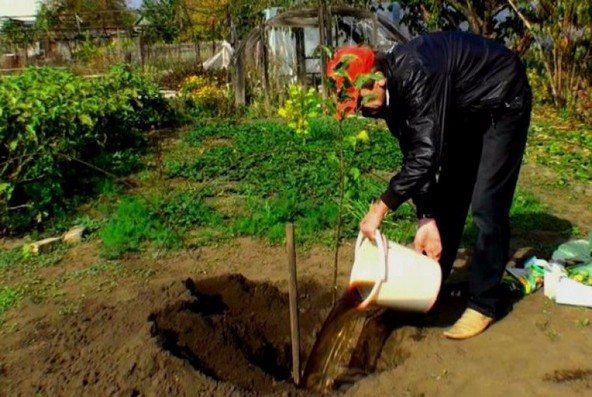

In the first year of life, one plant (for one watering) is supplied with 2 liters of water. But the seedlings should not be poured, since excessive moisture threatens with rotting of young roots. The gardener needs to be wise about watering and take into account the amount and abundance of precipitation.Top dressing If, before planting the seedlings, fertilizers (nitrogen, potash) were introduced into the planting pits, then such a top dressing for a young seedling will be enough for the entire first year of life.
If the gardener believes that an insufficient amount of fertilizer has been applied, then during the summer growing season, the seedlings can be fed. Such fertilizers are often combined with watering. In the water used for irrigation, you can add: liquid fertilizers based on chicken manure or slurry, or apply complex mineral fertilizers for fruit trees.
Already formed adult plants are poorly pruned, only to maintain a given shape.
Spring pruning of columnar apples and pears is carried out in April. Summer pruning takes place from mid-July to mid-August.
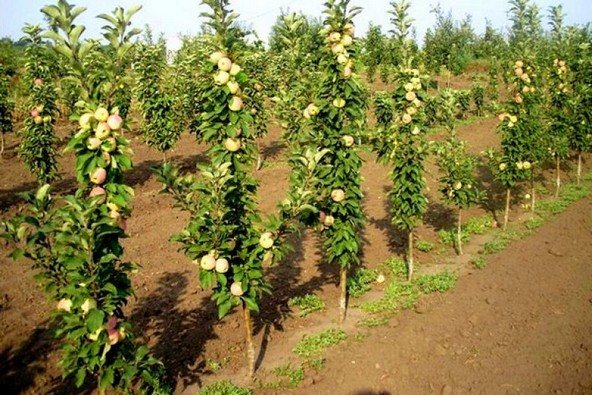

Features of the
Depth
The planting hole is dug up to a meter deep... In order to cover most of it with fertile soil with humus, compost.
BUT real depth of seedling placement will indicate the size of the root system. And finding the site of inoculation and the root collar.
Is it possible to plant a columnar apple tree alone?
Grade only Moscow necklace... And the rest - at least two. Better - more apple trees.
Group landing
When planting a large number of seedlings, place the apple trees according to the ripening period and the scheme for planting columnar apple trees must be observed:
- Summer group.
- Autumn group.
- A group of late.
- This is for ease of maintenance.
Joint planting with other trees is possible. Do not forget only that it is undesirable to plant them alone.
Important! But I have a columnar apple tree growing next to Melba and Idared. One. And for ten years now it has been making us happy with excellent apples. And in large numbers.
At what distance to plant columnar apple trees from each other, determine taking into account the territory you have, the varieties of seedlings planted and rootstocks on which the seedlings are grafted.
But don't get carried away with compaction. At least 40 cm between them... And at least one meter between the rows. Remember that apple trees need sunshine.
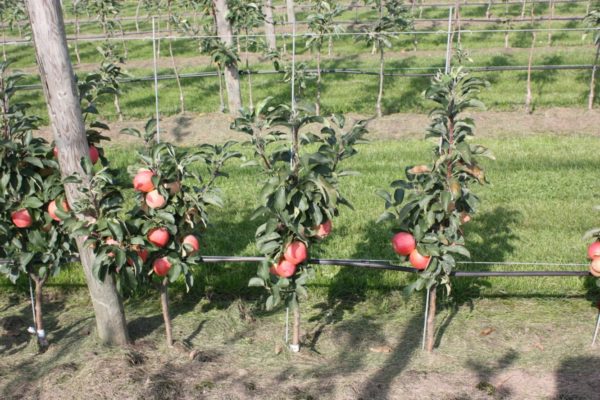

Small size of columnar apple trees.
Organic farming principle
Remember basic principles of organic farming:
- Do not dig up the earth.
- Mulching plantings.
- Do not use chemical preparations or use it only minimally.
- The use of biological products and green manure.
Therefore, it is more correct to talk about the application of the principles of organic farming when leaving for apple trees. But not landing. For trees with clonal rootstocks that have a superficial root system, this is relevant.
Here and apply:
- Not that digging, even loosening the soil can damage the roots.
- Equip ridges of columnar apple trees.
Mulching apple trees with straw.
- Conduct tinning. Sow green manure. Mow and mulch tree trunks.
- Mulch with chopped wood, sawdust, straw, hay, grass cuttings.
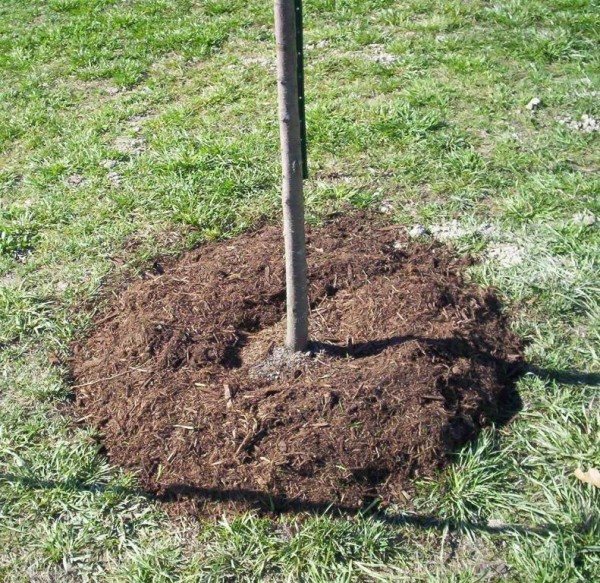

Well mulching.
Remember! In the layers of mulch, all kinds of rodents feel good in winter. And they recommend removing summer mulch. But how, then, to insulate for the winter?
Landing features
How to properly plant a columnar apple tree in clay soil?
You will have to dig the planting hole deeper - even up to one and a half meters.
Make a drainage pillow from rubble, broken brick, sand. Both plastic bottles and cans are used. It is important that there is no stagnant water in the pit..
Into sandy soil
Pour clay, silt into the prepared pits. Create a waterproofing effect.
With a high level of groundwater
- The depth of groundwater should not be less than 2 m.
- But we do not always choose sites.
- More often we are faced with the fact of their presence. And no one gives up from despair.
- I will only list some of the methods: Plant on mounds, embankments and ridges.
- Equip site drainage systems.
- Plant apple trees on a dwarf rootstock.
- Land on metal sheets, flat slate.
At the site of vaccination
Pay attention to the root collar and the grafting site. They should be 4-6 cm above ground level. Even after the soil has settled.
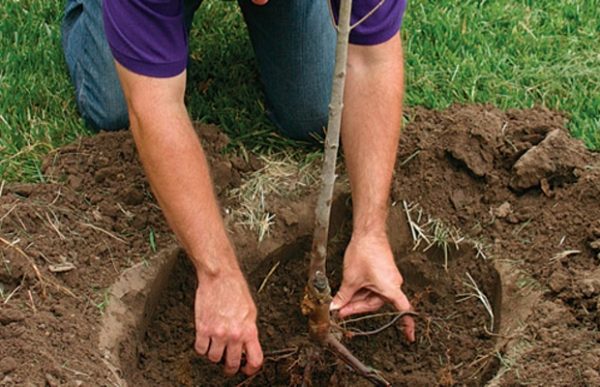

Planting apple trees.
Vaccinated south
One can only suggest finding a good compass. AND find grafting sites on a seedling.
Application in landscape design
The garden plot can be unusually decorated with columnar plants. The crown of such trees can be formed depending on the wishes of the gardener.
Almost all varieties of popular columnar fruit trees are very resistant to drought and frost, have excellent resistance to fungal diseases and scab, high yields and tasty fruits. It is these qualities of columnar trees that have won the recognition of gardeners around the world, and therefore they are worth growing. If you provide a dwarf garden with decent care and attention, it will delight its owners for many years with the beauty of graceful plants and decent harvests.
Preparing for planting a seedling
Before planting, it is required to create all the necessary conditions for the correct development of the culture.
Table 1. Step-by-step process of preparing the soil and seedling for planting.
| Preparation stages | Actions | Description |
| 1 | Landing plan development | When distributing apple trees over a summer cottage, it is necessary to take into account the varieties of trees and the peculiarities of grafting. It is important to take into account your ideas, planting apple trees where they will be in place. |
| 2 | Choosing the right place | The area where the apple tree will grow must be protected from strong winds and drafts. In this case, the place should be sunny. Planting along fences or near buildings will be optimal. If dwarf varieties are selected for planting, an apple mini-garden can be organized in a greenhouse. |
| 3 | Pit preparation | In the process of digging, the fertile soil layer is discarded separately from the lower one so that they do not mix. The preparation of nests for planting may differ depending on the number of seedlings:
|
| 4 | Soil preparation | Due to its weak root system, the apple tree requires fertile soil, which is filled with moisture and good air permeability. If the planting takes place in heavy soil with a high clay content, drainage in the form of crushed stone with sand is laid on the bottom of the pit. It is better to choose an area where groundwater is located at a distance of at least 2 m from the soil surface. |
| 5 | Fertilizing the pit | After the drain is laid, you need to add top dressing. 3 buckets of compost, about 50 g of potassium salt, 100 g of superphosphate and 100-150 g of slaked lime are mixed with the fertile soil that remained after digging a hole. This mixture is evenly distributed in the hole and left for 14-15 days for the soil to settle. |
| 6 | Root processing | On the eve of planting the plant in the soil, it is necessary to soak the root system in water with Kornevin or another stimulant overnight. And just before planting, a "talker" is prepared from clay, into which the roots are dipped before being transferred to the hole. |
Important! The roots must not be allowed to dry out before planting. If the planting site is not yet ready, you can dig in the seedling for a while and water it regularly. It can also be placed in a container with wet sawdust that is watered periodically.
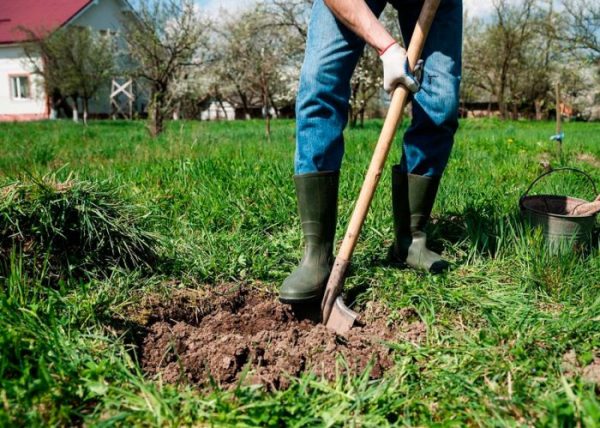

The process of digging a hole for a seedling
Columnar fruit trees - let's create a garden on one hundred square meters!
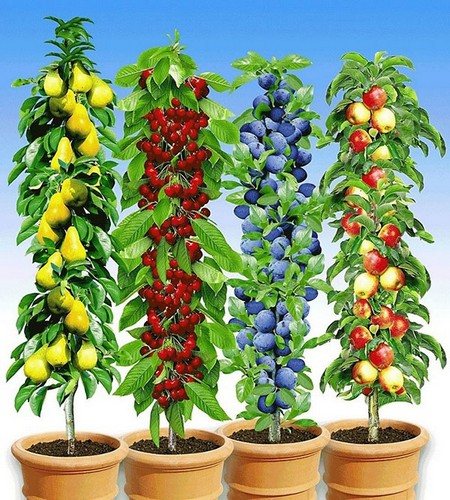

Columnar fruit trees get their name from the shape of the crown. The crown represents the shape of the aboveground part of the tree, the location of the branches in relation to the trunk.The columnar shape of the tree represents very short skeletal branches, on which there are many shortened shoots - ringlets with a fruit bud. From a distance, flowers and fruits appear to be located on the trunks. Abnormal branch development of a fruit tree has been seen in Canada, the mutation has led to the creation of ornamental and fruit trees in a columnar shape.
Read also: How to remove midges from flowers in a pot with folk remedies?
Pruning apple trees and wintering plants
One of the most important operations for the care of these plants is their pruning. The fact is that sometimes their branches begin to grow not vertically upwards, but sideways. It is with this process that you need to fight with the help of pruning. Pruning a columnar apple tree is also needed because, due to a deficiency of hormones, these varieties simply lay a colossal number of flower buds in all sorts of places, for example, on the trunk. As a result, a large number of fruiting branches, like other apple trees, are simply not needed here.
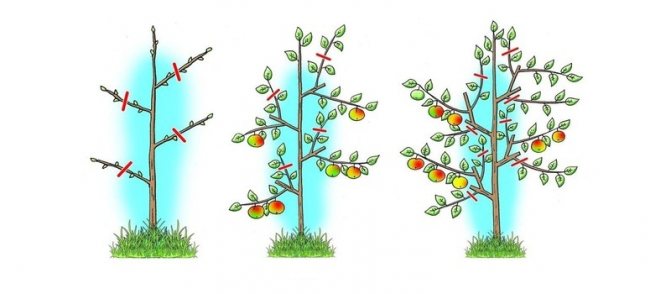

To get rid of such branches, it is necessary to shorten each side branch by 2 buds in the spring of the first growing year. Normally, by autumn, 2 powerful shoots will have to grow from the remaining buds. The next year, the shoot growing upward is cut again according to the proposed scheme. In the summer of the third year, an uncircumcised horizontal branch should begin to bear fruit, and a cut vertical branch should give 2 shoots.
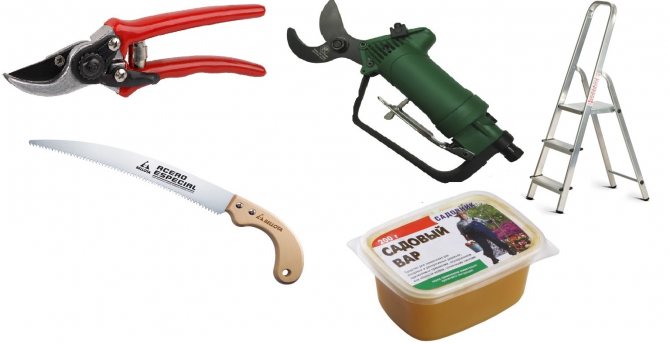

Further, in the spring of the third year, the branch on which the apples grew is completely cut out, and the cycle repeats. According to the described scheme, the fruit link can function for up to 5 years, after which it will need to be cut off, exposing the lower part of the trunk. If you do not understand exactly how to trim columnar apple trees, you should watch a video on this topic.
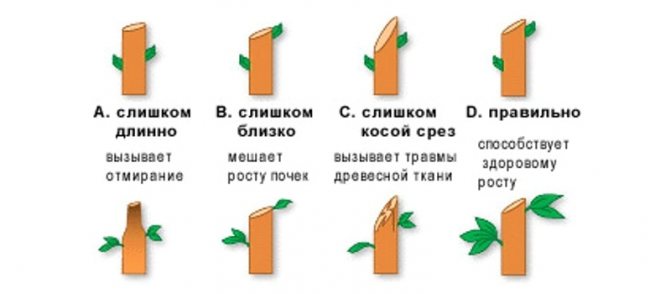

It is also important to prepare the described plants for winter. The fact is that they do not tolerate cold very well, and if you neglect protection from them, the whole garden can freeze out.
Therefore, it will be necessary to cover the tree trunks with covering material. Straw, spruce branches, and shavings are best suited for this. They allow you to create the necessary conditions for normal wintering of apple trees, while protecting them from rodents. In addition, when it snows, it will be possible to hilling them.
Despite the fact that columnar apple trees are quite laborious to maintain, it makes sense to cultivate them in your garden. By doing this, you can not only save space on your site, but also get the opportunity to harvest a bountiful harvest of delicious fruits. However, be careful when buying seedlings.
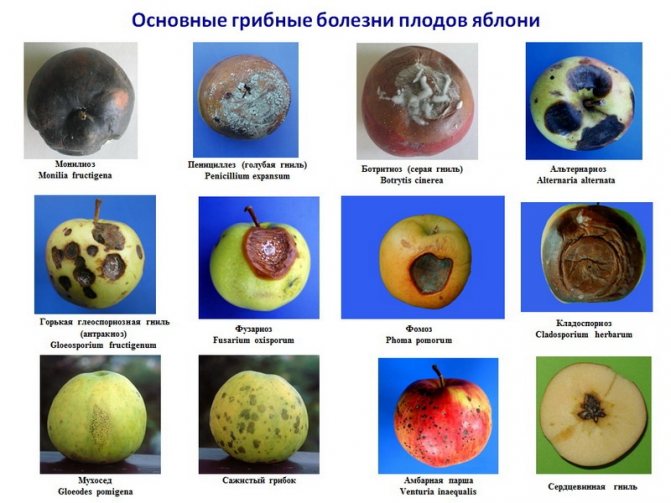

The fact is that all colonial varieties reproduce exclusively by seeds, which are obtained from grafted trees. Therefore, if you buy an unverified planting material or stock, it will not give you the desired effect, and the plant grown from it will not have a colonial crown. Therefore, use only the planting material that you purchased from certified nurseries. He will be able to give you a guarantee that you can grow columnar apple trees from him.
Obtaining seedlings of columnar tree varieties
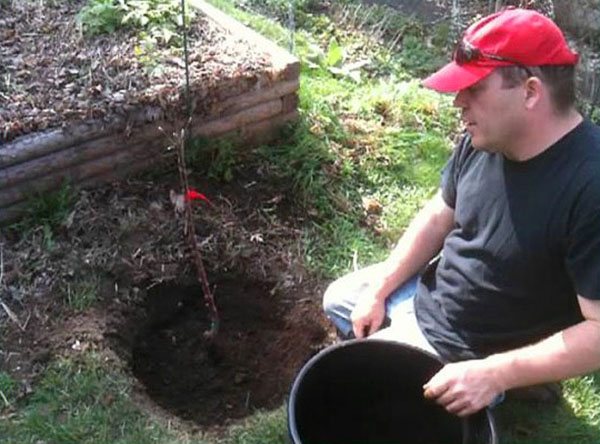

The selection work of scientists is a painstaking long-term selection of plants with altered traits. Useful deviations are developed and reinforced at the genetic level. An example of how columnar varieties are obtained can be traced by the apple tree. The Macintosh variety was distinguished by the most compact crown. On its basis, in 1964, the columnar variety "Vazhak" was obtained in Canada. All other columnar apple varieties are products of selection work with Wijeik, in different climatic regions.
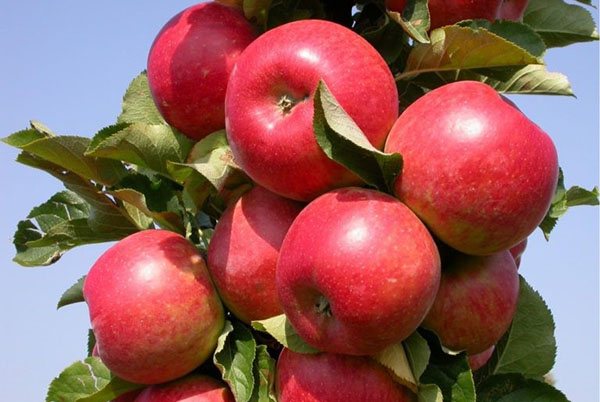

Varietal seedlings of columnar fruit trees with stable properties are obtained only in well-known foreign and domestic nurseries. A prerequisite is the use of dwarf varieties as a rootstock - Currency, Arbat, 003. The graft must be with the dwarf gene - Co.
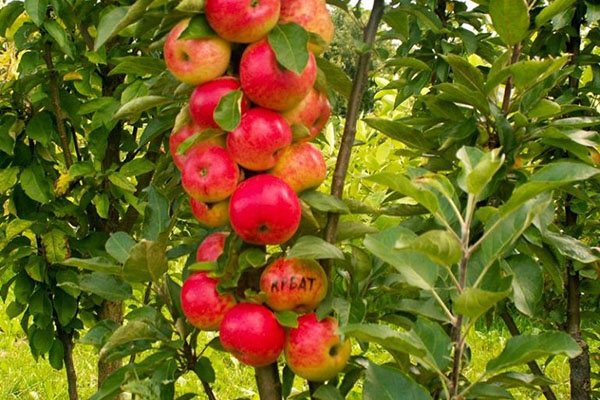

Another direction in the formation of seedlings is an artificially formed columnar form from dwarf varieties Orlinka, Vasyugan, President and the like.
In the same way, other columnar fruit trees are obtained - pears, plums, cherries, apricots. As a result, a seedling leaves the nursery with a well-developed root system and early fruiting. It is important to choose a zoned variety, to study the rules of care and formation techniques.
The agrotechnology of a garden of intensive fruiting has its own characteristics.
Features of columnar fruit trees
Columnar trees are small plants with a compact, peculiarly shaped crown. You should also take into account the fact that all fully ripe fruits are placed along the entire pillar, and when such a plant begins to actively bear fruit, then in its shape it looks more like a narrow pyramid covered with fruits than a tree.
It's important to know: remember, such a plant must be constantly cut off from unnecessary branches, as this has a positive effect on its health, and it becomes several times easier to process and collect fruits.
Also an important feature of the columnar is the ripening process of the fruit. Although it is quite long compared to the rest of the fruit brothers, the result, as they say, exceeds all expectations. After the first active flowering, it is covered with ripe, large, and most importantly, juicy fruits, which will be enough both for sale and for preservation for the winter.
It's important to know: the service life of such a tree does not exceed 20 years (which is quite a lot), after which flowering and fruits disappear. But, do not grieve, because after, it can live for many more years and be just an unusual decoration of your garden.
Gardens of the Moscow Region
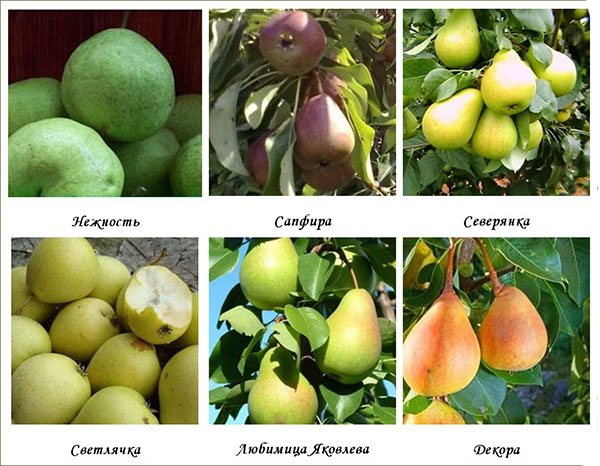

Columnar fruit trees for the Moscow region are represented by apple trees, pears, plums and other types of fruits.
The varieties of the dwarf columnar pear are not very diverse. But a thermophilic plant in the middle lane is already exotic. In addition, the first fruits appear in the second year, after planting the seedling. Pyramidal tree bears fruit for 10-15 years with good care. The yield of a compact tree is higher than that of a conventional tree. Yakovlev's favorite is the most frost-resistant variety, and Severyanka is in a hurry to return the crop in August. The Decora variety will bestow its ripe fruits in August, and the half-kilogram Dalikor fruits are harvested in October.
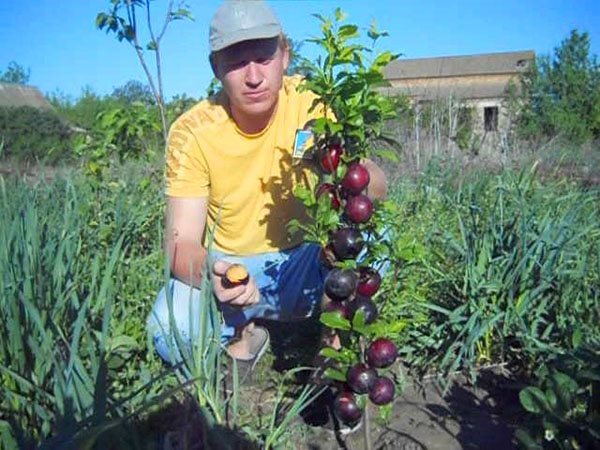

Columnar varieties of plum fruit trees can most often be found in the country gardens of the Moscow region. They have a small crown, short stature, allowing for easy harvesting. Dwarfs begin to bear fruit in the second year after planting. Many have become favorite varieties, but several are more popular:
- Blue bird, the variety is the result of a crossing of Hungarian, Caucasian and Kabardinsky early. Large, wide fruits are covered with a waxy bloom. The sweet and juicy fruits are harvested in mid-August with ripening for two weeks. The tree is self-fertile, immune to common diseases.
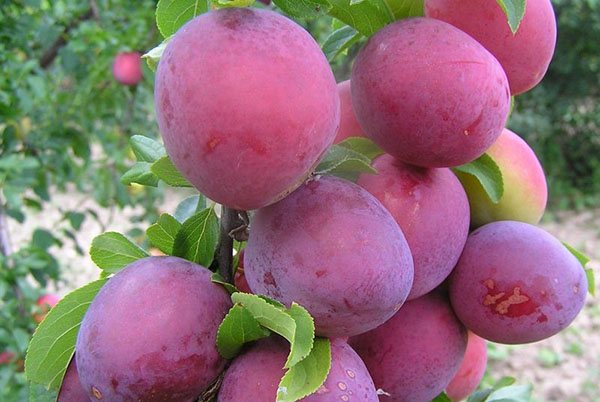

- Plum of Memory of Temiryazev is 2 times smaller, but contains a large amount of vitamin C. The tree is self-fertile, and fruiting occurs 4 years after planting. It does not bear fruit every year, but it is resistant to frost and drought.
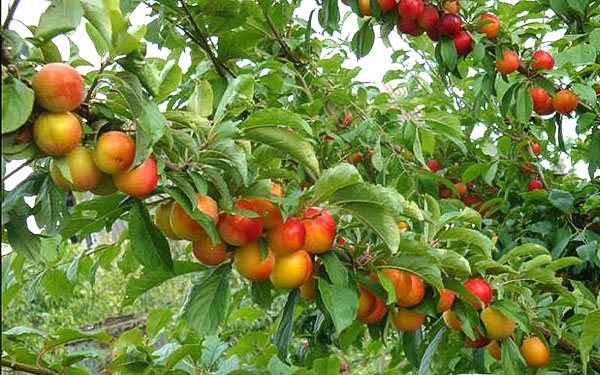

- The Smolinka variety is distinguished by an egg-shaped dark purple color. The columnar tree can grow up to 5.5 meters in height and yield 20 kg of delicious fruit. But this variety requires a pollinator, and branches overloaded with plums require support.
Column-shaped peaches and cherry plums, apple trees and apricots grow in the Moscow region. Gardens made from such fruit trees require special care, but the results are encouraging.
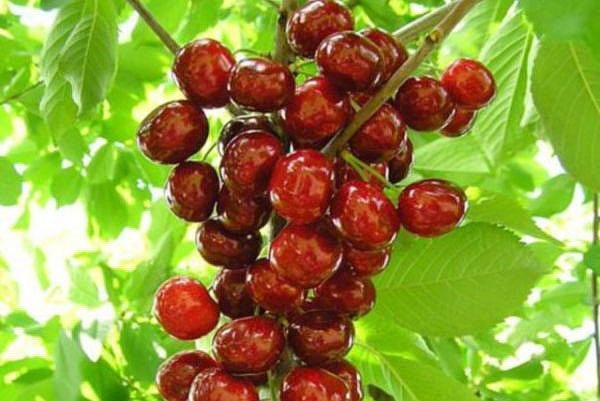

A photo of columnar fruit trees cannot convey a special aura when a dozen trees hung with fruits are collected on a plot of one hundred square meters.
Residents of the southern regions are not limited in the choice of planting material. They can use varieties of foreign selection.It is believed that in Europe, with its mild climates, the most productive and tasty hybrids have been created. Columnar fruit trees in Krasnodar are the backbone of industrial horticulture. The garden is looked after taking into account the peculiarities of the tree.
What are columnar trees and their advantages
A characteristic feature of the columnar is the peculiar natural shape of the crown. The straight stem has a generally flat surface with many frequent small lateral branches.
There are several variations in the classification of this group. According to the height of growth, dwarf, semi-dwarf and vigorous ones are distinguished. But this concept is arbitrary, since most species do not exceed 2.5 m, which is not so much by the standards of standard plants. And by type they distinguish:


- Fruit. These are mainly apples, pears, plums and cherries, as well as cherries and apricots. The columnar apple-tree variety "Moscow necklace" is the most popular in our climatic conditions, plums - "Blue Sweet" and "Columnar". Pears have no variety names - they are replaced with numbers from G1 to G 5.
- Deciduous. Used for decoration, suitable for decorating topiary.
- Conifers. Spruce, thuja, juniper are often found. They practically do not require pruning, which makes them common plants for city parks, alleys, playgrounds.
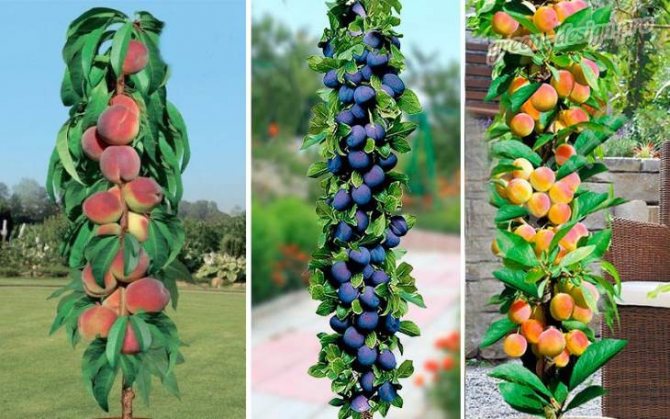

Features of caring for columnar trees
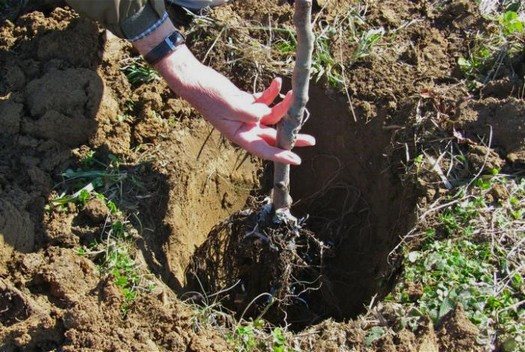

First of all, you need to buy high-quality planting material. In order not to lose years of waiting for a miracle, the seedling needs to be bought expensively and directly from the nursery. There are many subtleties about growing a scion and using a rootstock. It is good if the seedling has a closed root system.
Pits for fruit trees are prepared according to the classical scheme. It is important that the soil has time to settle, the mound with the fertilizer mixture is compacted. For better lighting and maintenance, trees should be planted in a row every 50-60 cm, and the row spacing should be left at 1.5 m.
One of the most common mistakes is deepening the vaccination site. If this part of the stem is in the ground, there will be no fruit.
Care and pruning of a columnar fruit tree have features. The column grows with the upper bud, so it must be protected from both frost and damage. There will be no top - the columnar tree will turn into an ordinary one, due to the growth of lateral shoots. Pruning of branches is carried out if they grow more than 5-8 cm. Regrown shoots are cut off exactly on June 20-25 so that the cut dries up and fruit buds appear before autumn.
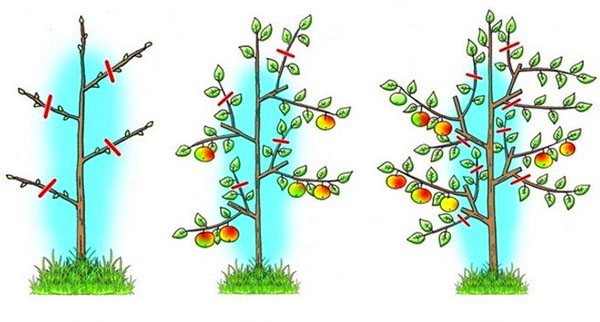

In the first years, trees have increased growth, it is important at this time to keep the "hair". Another most vulnerable spot is root freezing. It is necessary to insulate the root system with spruce branches, non-woven material, but so as to prevent rodents from reaching the trunk. Sunburns of trunks are also dangerous. The fruiting and growth rate of the tree is a varietal trait.
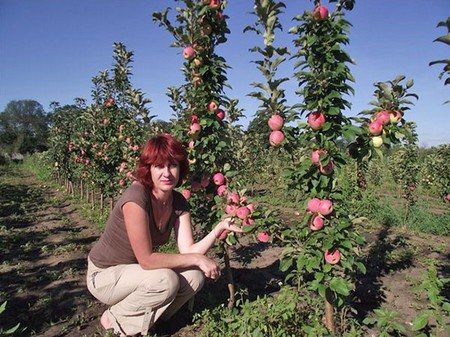

It is important to feed all kinds of columnar fruit trees on time and correctly. They take out of the ground and transform into fruits a mass of macro- and microelements. For 1 ton of apples, it is required to process 5 kg of nitrogen, 6 kg of potassium, 3 kg of phosphorus. The plant absorbs top dressing in the spring, when the processes of biochemistry are intensive, and in the fall, when the roots grow, and the buds of the future harvest are laid.
In the summer, all treatments against insect pests and fungal diseases must be carried out, according to the table. But since the crown is small, the concentration of solutions in the tree is much lower than that of a spreading tree.
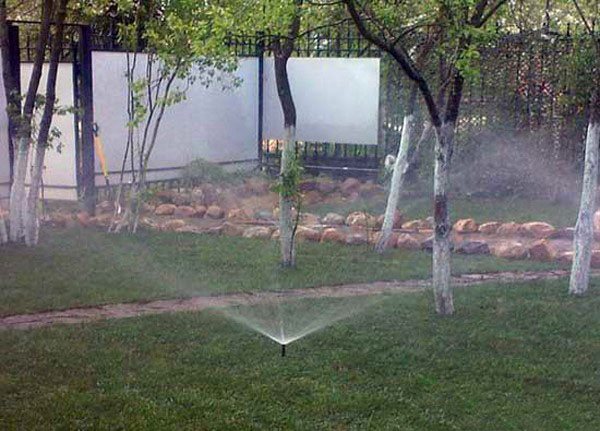

Watering the garden can be organized in holes, along furrows or drip irrigation. The best irrigation method is considered to be drip irrigation:
- water is supplied according to the needs of the tree;
- the ability to apply dissolved fertilizers;
- no surface crust is formed, air enters the roots;
- the root system of columnar fruit trees is compact, fibrous, and the absorption of moisture by drip irrigation is effective.
Scientists say columnar fruit tree varieties are becoming more popular in commercial and private gardens.The desire to grow as many different trees as possible in a limited area is justified.
Agrotechnics
Cultivation of columnar apple trees requires certain care rules to maintain their health and yield.
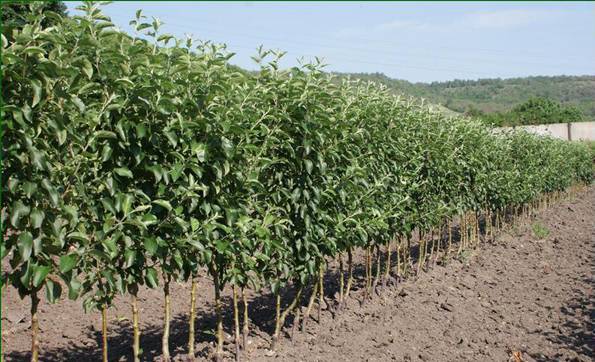

Organization of watering
Watering columnar apple trees should be abundant during the first years after planting. It should be carried out 2 times a week. It should be especially intense during dry seasons. Watering methods can be different:
- the creation of grooves;
- sprinkling;
- watering holes;
- irrigation;
- drip irrigation.
Watering trees should be carried out throughout the summer. The last procedure is carried out at the beginning of September, after which watering stops. Otherwise, the growth of the tree will continue, and before wintering, it must rest.
Loosening
In order to retain moisture under the tree and fill the soil with oxygen, it must be carefully loosened after each watering. After it, dry peat, foliage or sawdust crumbles around the tree. If the seedlings are planted on a slope, loosening can damage the roots, so a different method is used. In the near-trunk circles of apple trees, siderates are sown, which are regularly mowed.
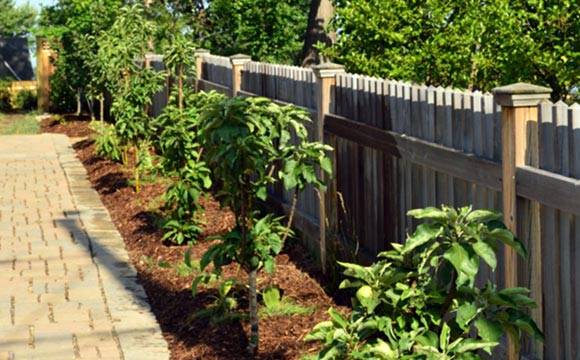

Top dressing
For the full growth and development of a tree, systematic feeding is necessary. In the spring, when the buds have not yet blossomed, the seedlings are fed with nitrogen compounds. The second feeding of trees with complex fertilization is carried out in June. At the end of summer, potassium salts are used to accelerate the ripening of the shoots. In addition, you can spray the crown with urea.
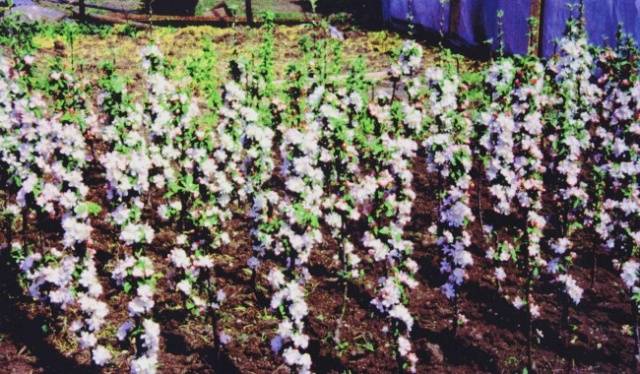

Pruning trees
It is carried out in the second year after planting, usually in the spring, before the start of sap flow. Pruning frees the tree from damaged and diseased branches. Side shoots are also removed. After pruning, only two growth points are left on the tree. In the second year, of the two grown shoots, they leave the vertical one. It is not necessary to form a crown, since the tree itself retains the appearance of the column.
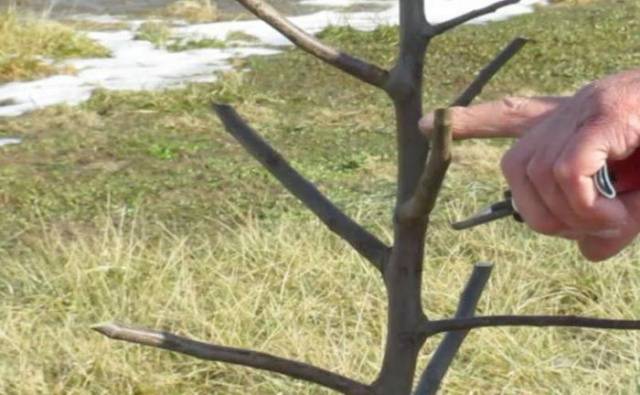

Shelter for the winter
When sheltering columnar apple trees for the winter, the apical bud and roots require special attention. A plastic wrap cap is put on top of the tree, under which the bud is insulated with a rag. The root system of the apple tree is insulated with spruce branches, the growth point can be insulated with several layers of burlap, wrapped with nylon tights. Snow protects best from frost, so you need to cover the trunk circle of a columnar apple tree with a thick layer of snow. However, in early spring, before the melting begins, the snow must be removed so as not to flood the roots of the apple tree.
